Scientists estimate that anywhere from one-third to two-thirds of sea life has not been discovered yet. That means that there are millions of creatures lurking in the depths waiting to scare the hell out of us. If there are more undiscovered species than there are discovered ones, what else is out there? The thought is enough to send chills down the spine, but you don’t have to let your imagination get the best of you, because we’ve rounded up some of the most troubling monsters that we do actually know about.
Many of us are foregoing travel this year because of the epidemic, but don’t let that missed beach travel get you down! Count your blessings because you could encounter one of these unsavory characters at the sea. Well, to be honest, the odds of swimming next to one of the beings at the beach is low. However, that doesn’t mean they’re not still out there! Here are 25 terrifying sea creatures that will haunt your nightmares and make you wish for dolphins.
Vampire Squid

Ugh! The vampire squid is a small cephalopod found throughout temperate and tropical oceans in extremely deep conditions. Not deep enough, if you ask us. It’s a living fossil! When it’s threatened (who would ever?), it turns its “cape” inside out so that the spines poke out and act like a spiny barrier.
Anglerfish
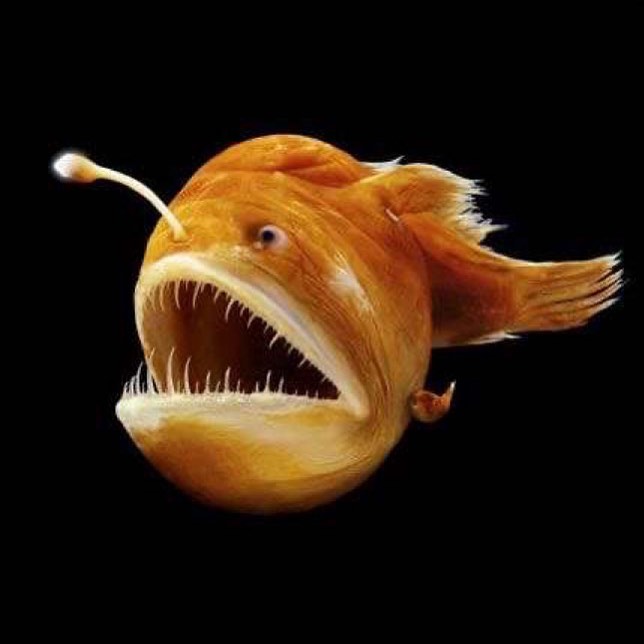
The anglerfish is a bony fish named for its characteristic mode of predation, in which a fleshy growth from the fish’s head acts as a lure for other fish. Yes, this fish’s body grew its own lure because it’s a predator like that. If you thought it couldn’t get worse, we’re sorry to tell you about how they mate.
Once a male finds a suitable mate, he bites into her belly and latches on until his body fuses with hers. Their skin joins together, and so do their blood vessels, which allows the male to take all the nutrients he needs from his mate’s blood. The two fish fuse into one! Not great!
Atlantic Wolffish
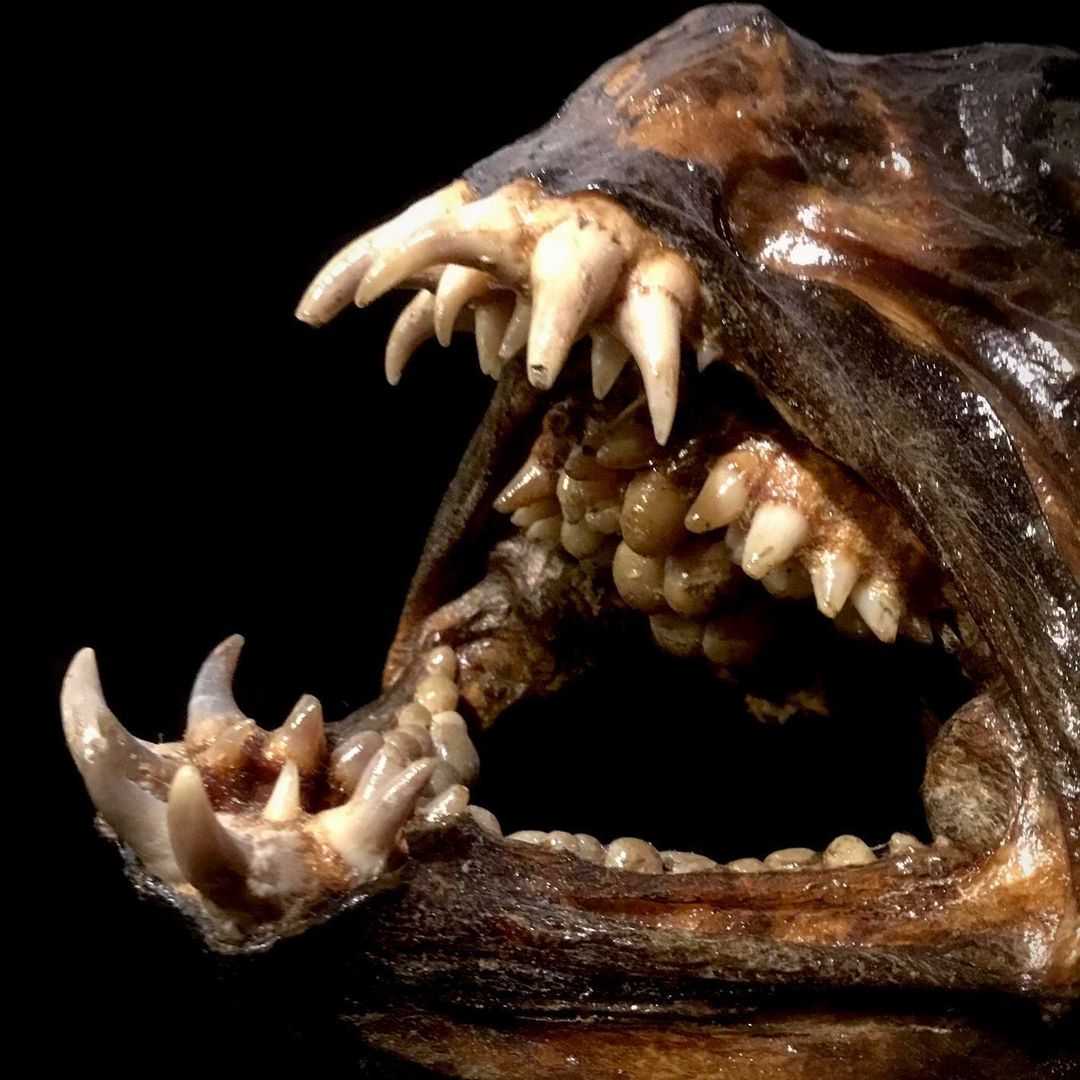
Look at this charmer! The Atlantic wolffish is known by a few names: seawolf, Atlantic catfish, ocean catfish, devil fish, wolf eel, woof, or sea cat. *Sigh* The wolffish is characterized by its chompers and its ability to thrive in cold water. They are commonly caught and enjoyed in the upper Atlantic and in Europe. Which is fine as long as they don’t eat you first!
Goblin Shark
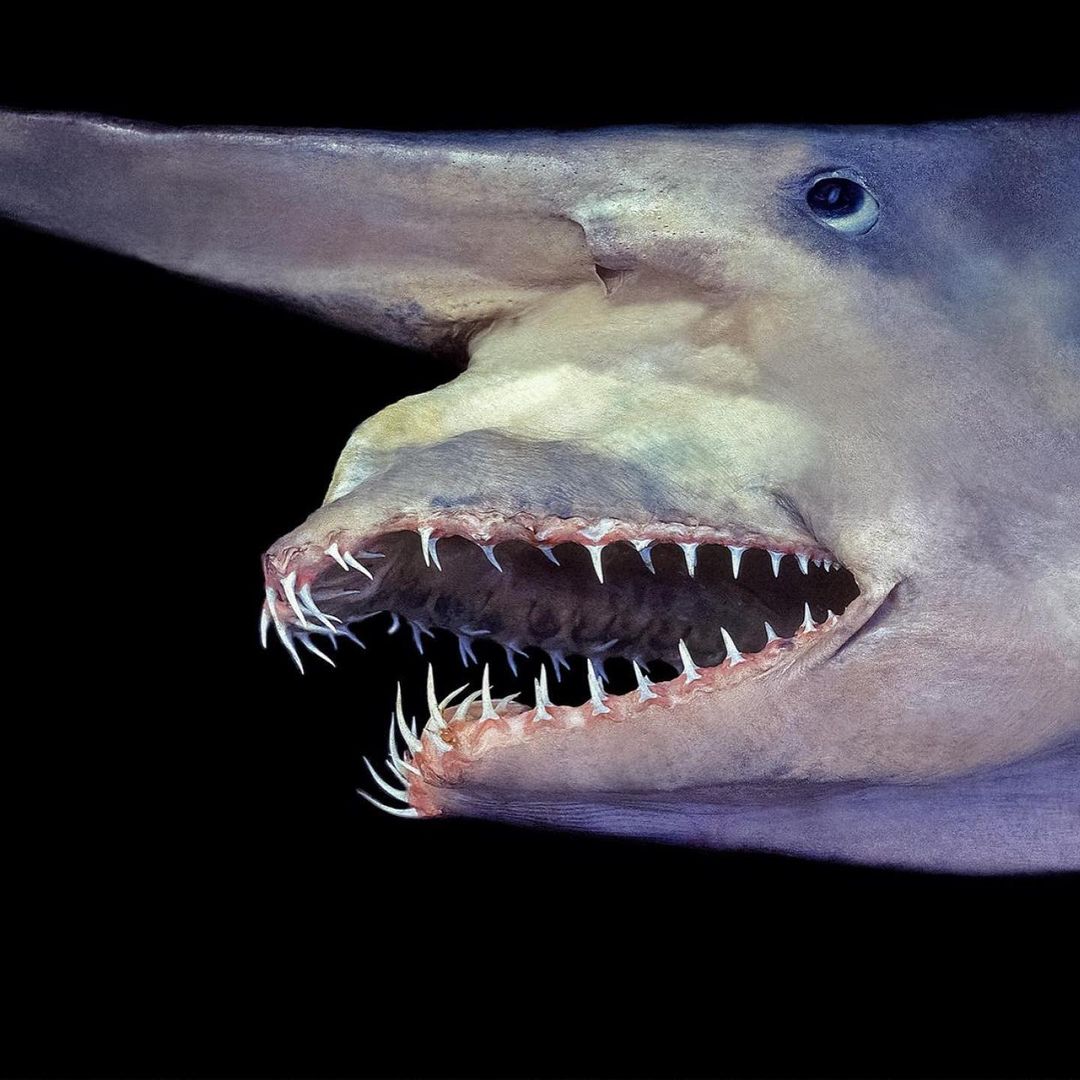
The goblin shark has a fitting name. This terrifying deep-sea shark is considered a living fossil and it and its relatives have existed on the planet for 125 million years!!! This pink-skinned shark has an unusually long snout and highly protrusible jaws. The average goblin is between ten and thirteen feet long. There have been no known attacks on humans from these beasts, but we’re not interested in tempting fate.
Sarcastic Fringehead
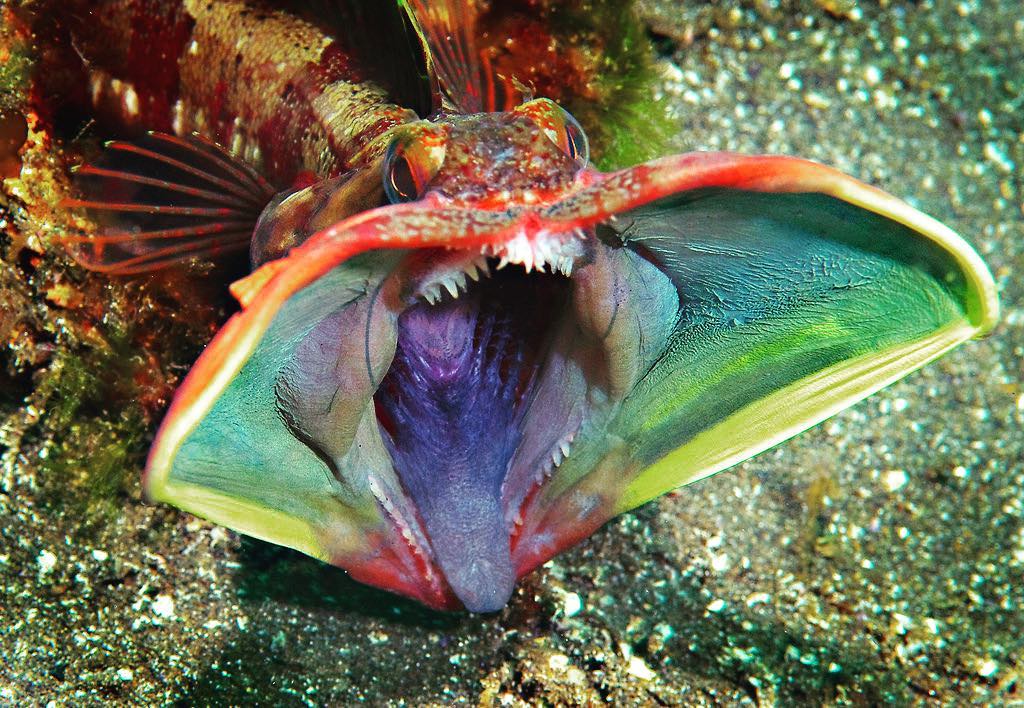
The sarcastic fringehead fish is a hardy saltwater fish known for its huge mouth and territorial behavior. The fish is notoriously feisty and when it feels threatened, it looks like this. It’s common for a pair of these guys to get into a territorial battle which involves them aggressively slamming their wide-opened mouths together.
Viperfish
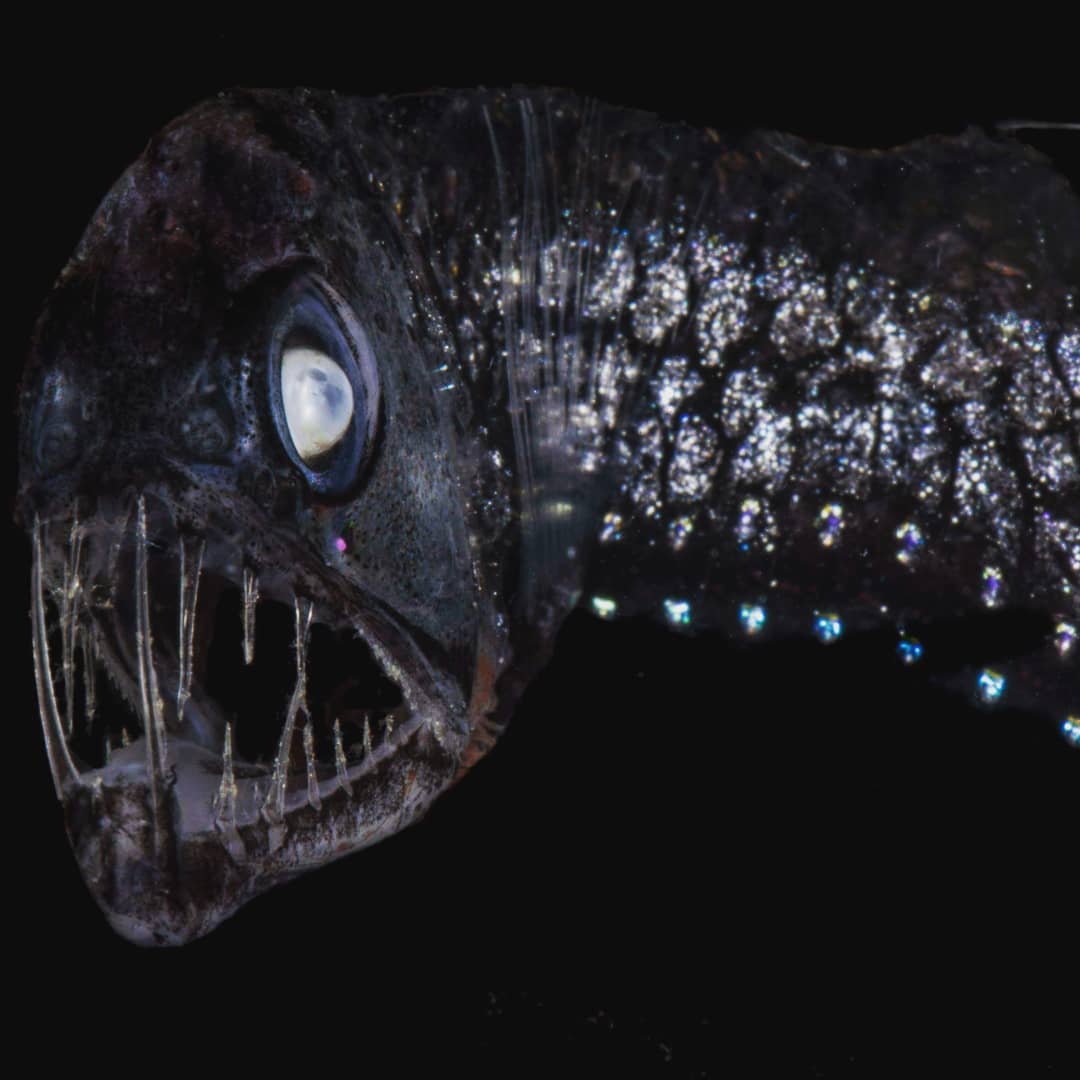
We’re not sure if this will bring you comfort, but viperfish rarely grow larger than two feet long. The fish are characterized by their razor-sharp teeth. While you might think you’re seeing scales here, you’re wrong. Their bodies are covered in a thick, transparent coating of an unknown substance. What!? These predators capture their prey by engaging their photophores, light-producing organs that attract smaller fish. Its teeth are so long it cannot close its mouth, but that comes in useful when hunting. Ew!
Japanese Spider Crab
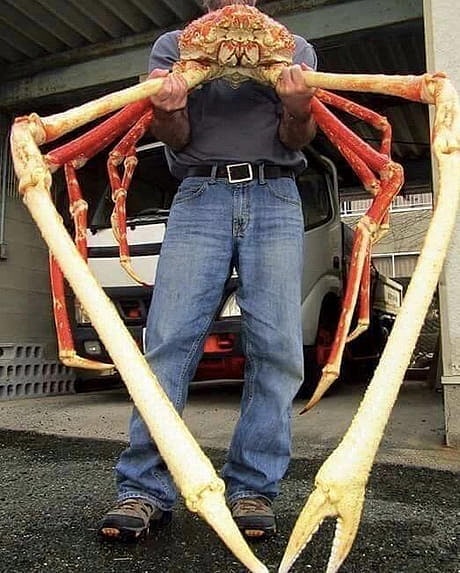
The Japanese spider crab is one of the largest arthropods in the world. It can measure twelve feet across and weigh fifty pounds. They can live for a hundred years, which is a long time to plot a murder. These crabs love to scavenge and feed off the corpses of other dead animals that fall to the seafloor. Because they are so large, they “decorate” their shells with random things to help disguise them from predators (yes, they have them) like octopi.
Fangtooth Moray Eel
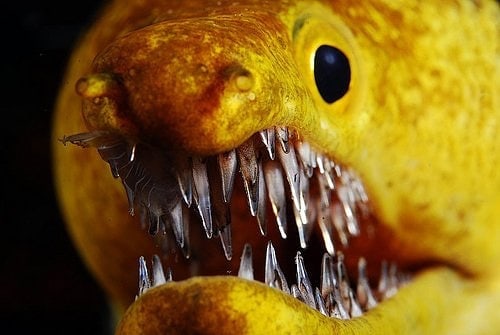
The fangtooth moray is a moray eel of the family Muraenidae found in warmer parts of the eastern Atlantic Ocean, including the Mediterranean Sea and the Canary Islands. It’s characterized by its “glass teeth” which look like glass shards that want to tear you apart. An adult fangtooth can reach up to four feet long. No thanks! Dry forever.
Giant Isopod
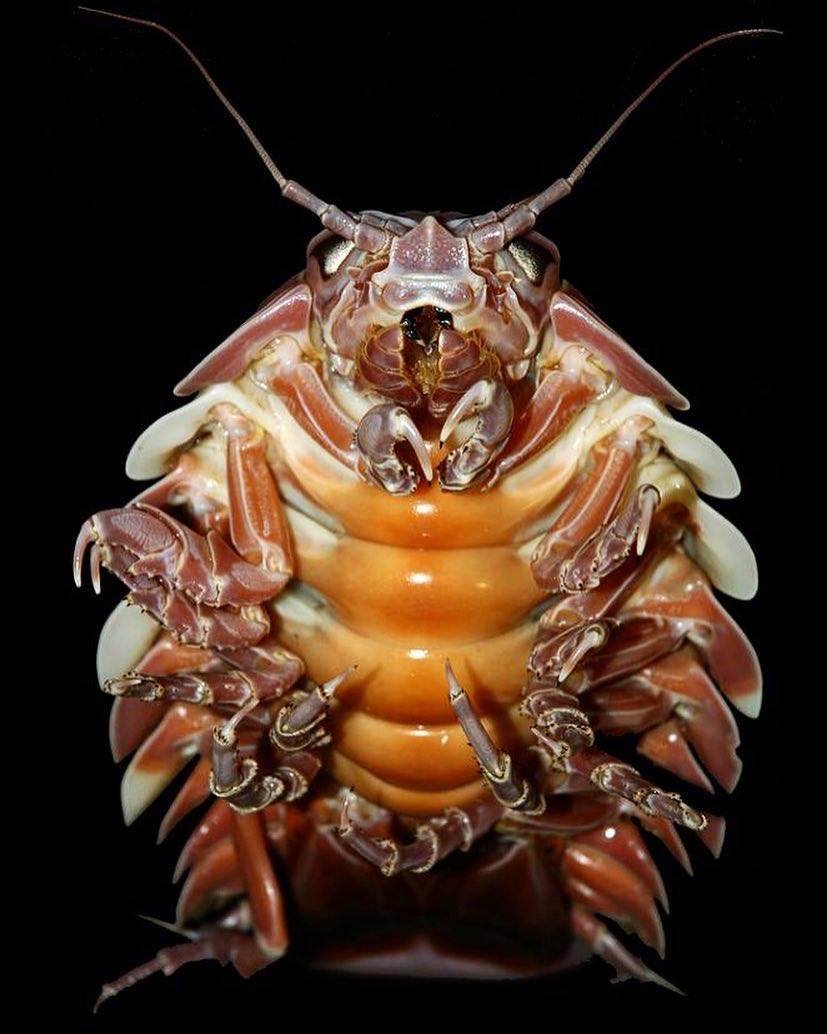
A giant isopod is any of the almost 20 species (!) of large isopods in the genus Bathynomus. They are plentiful in the cold, deep waters of the Atlantic, Pacific, and Indian Oceans. They look like giant, evil cockroaches and they are generally around a foot long. However, some have claimed to find specimens almost three feet in size. Three feet! A living fossil these things have been around for a long, long time. Which is understandable, who wants to mess with this?
Pelican Eel
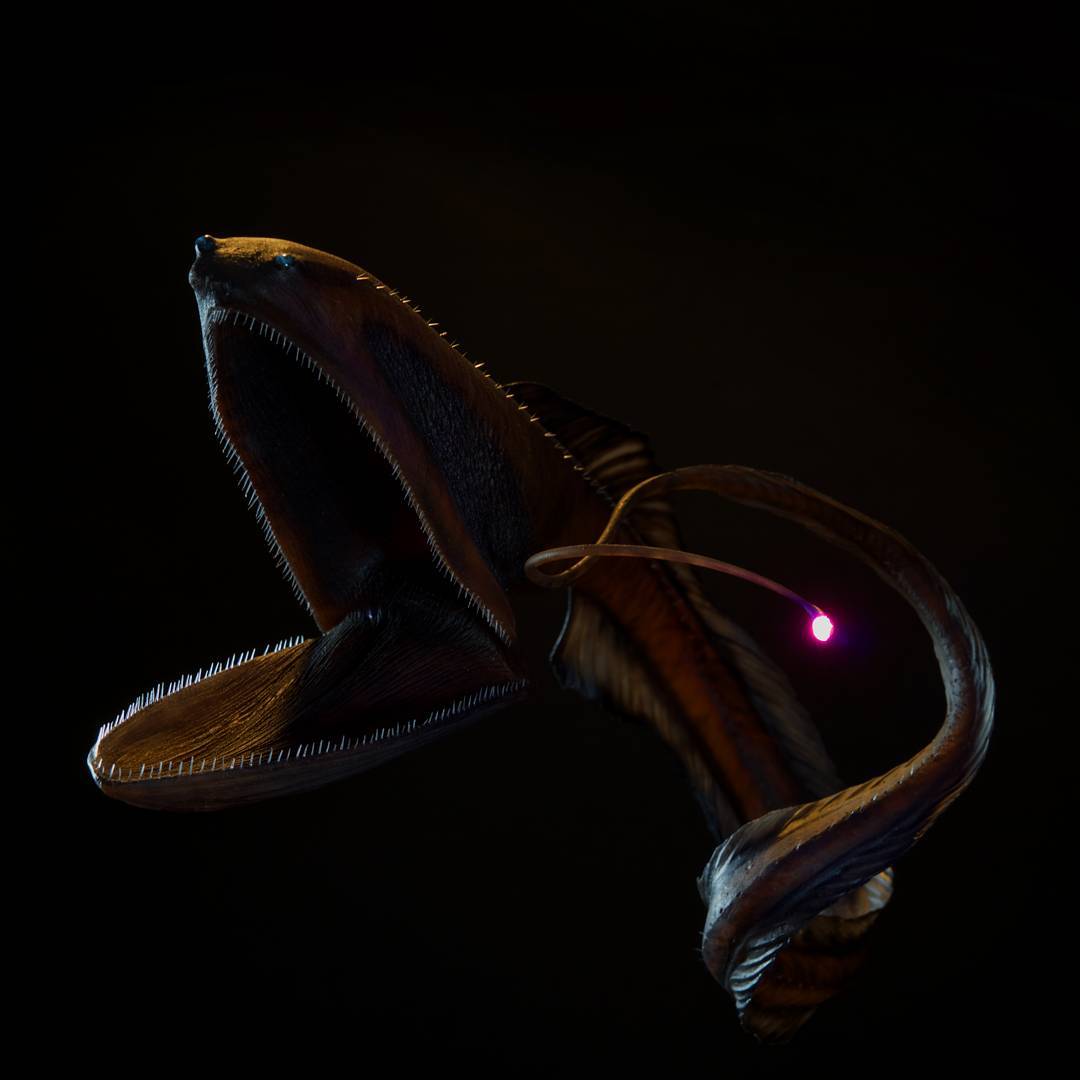
This pelican eel wants to slither right into your next nightmare. The pelican eel is a deep-sea eel rarely seen by humans (usually just before a terror-induced fugue state), though it is infrequently caught in fishing nets. It is the only known member of the genus Eurypharynx and the family Eurypharyngidae. Look at that little hell-light at the end of its tale.
Payara
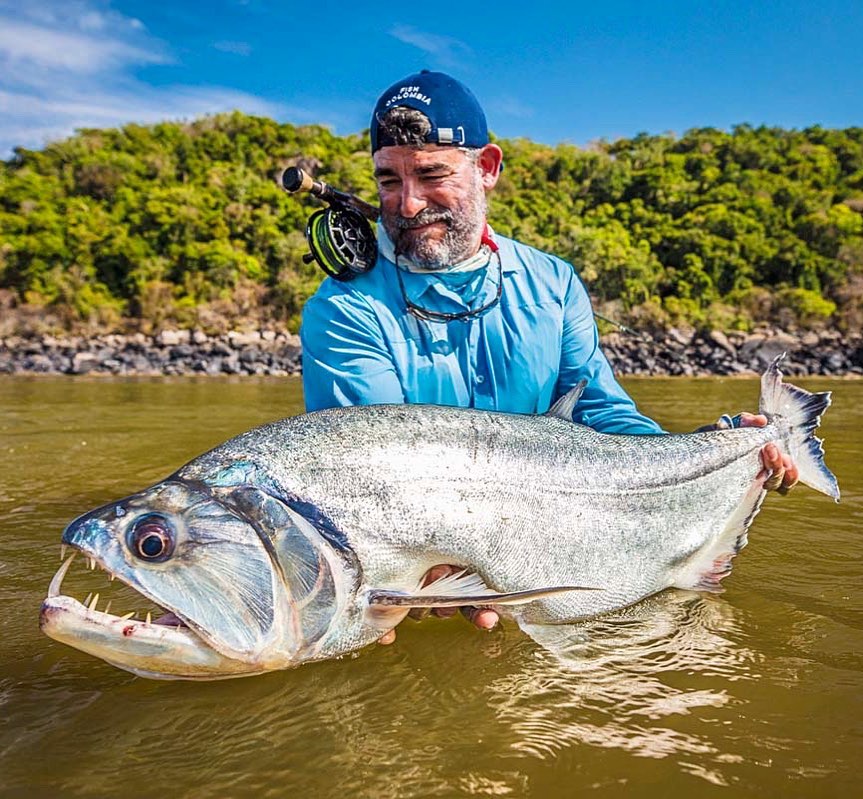
The payara, Hydrolycus scomberoides, is a species of dogtooth tetra. This predatory fish is found in the Amazon Basin in tropical South America. The fish is characterized by two long fangs protruding from its lower jaw. These are used to impale their prey, mostly smaller fish. These aggressive fish generally grow to be between two and four feet long!
Black Dragonfish
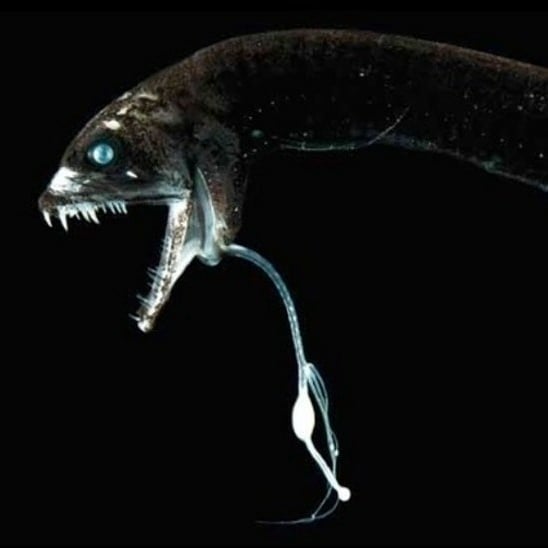
Idiacanthus atlanticus is a barbeled dragonfish of the familyStomiidae, found around the world in southern subtropical and temperate oceans. Female dragonfish generally grow to a length of sixteen inches while their male counterparts only reach two inches in length.
Black dragonfish are bioluminescent, but unlike most predators, which use their light primarily to attract prey, they can see their own light. As a result, the fish can use their light to hunt. Let us get this straight… These fish emit their own light to hunt prey. No thanks, under the covers forever.
Deadly Sea Cucumber
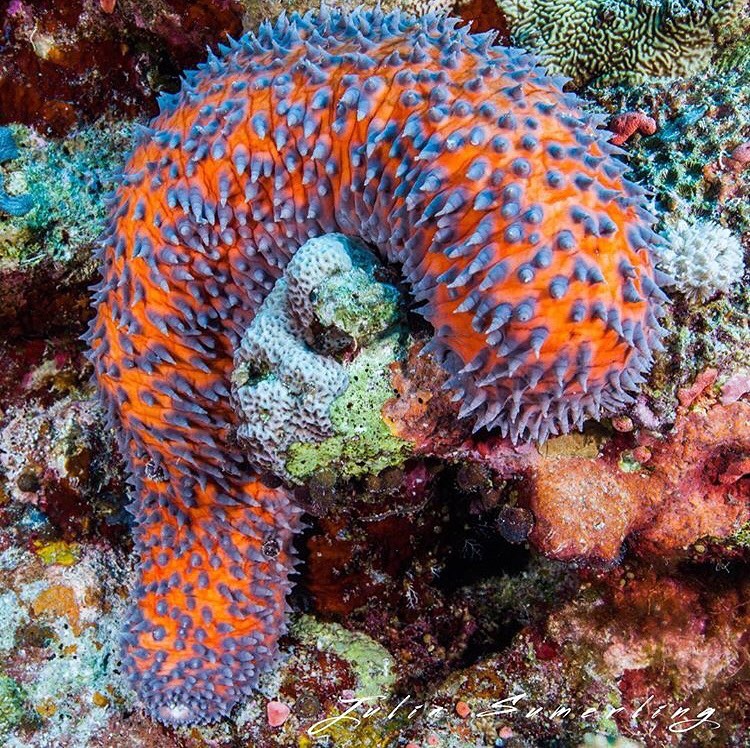
There are many different species of sea cucumbers that look aquatic caterpillars. While they look grosser than menacing, when threatened, these creatures will release a holothurin which is a white sticky like substance from their Cuvierian organ. The substance is toxic to humans and other life stunning many and sometimes even causing death. Some species of sea cucumbers can grow to six feet in length. Nah.
Atlantic Stargazer Fish
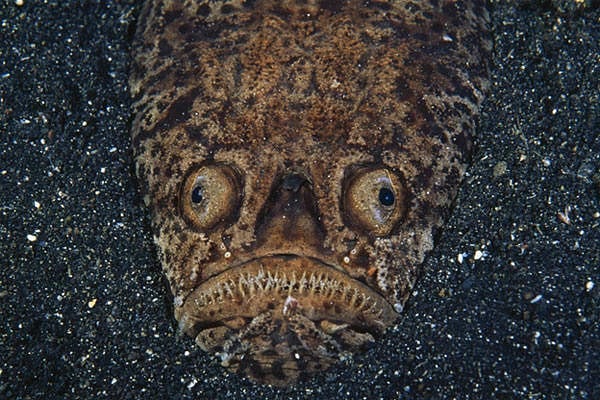
Atlantic stargazer or Uranoscopus scaber is a marine, subtropical fish of family Uranoscopidae. Its body is suited for living on the seafloor and is one of few fish capable of bioelectrogenesis, the ability to generate an electric charge. So it just hides at the bottom ocean looking up like this, waiting to shock things. Our feet will never touch the floor of the sea again.
Armored Searobin
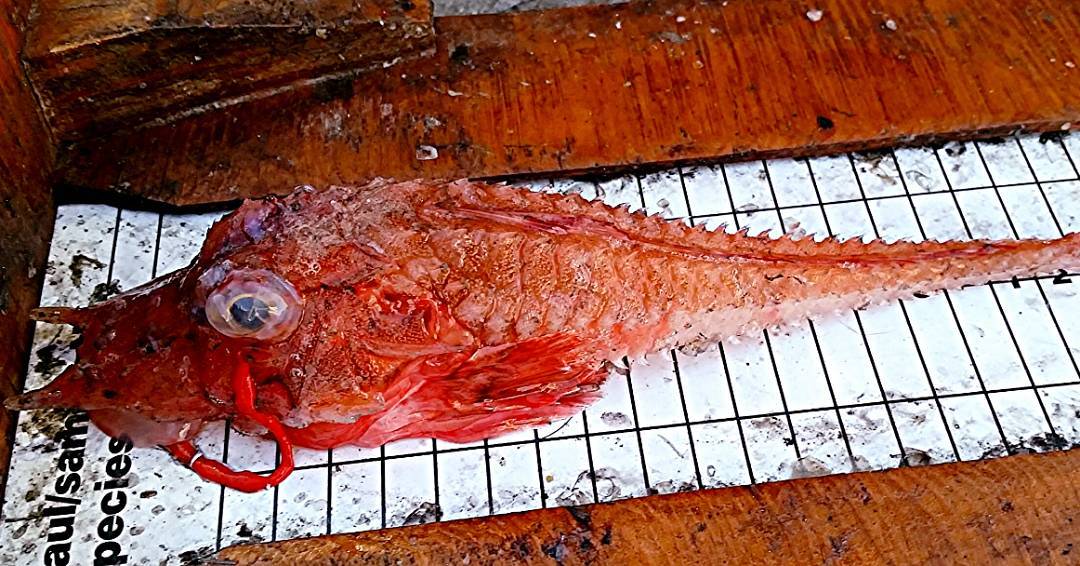
Armored searobins, or armored gurnards are a family, Peristediidae, of scorpaeniform fishes found in deep waters all over the world, with most species in tropical regions. They are encased in heavy scales with prominent spines. They have prominent and often elaborate barbels on their chins. The way their fins are structured in such a way that makes searobins look like birds when they fly. Generally, these fish grow between one and two feet in length.
Moray Eel
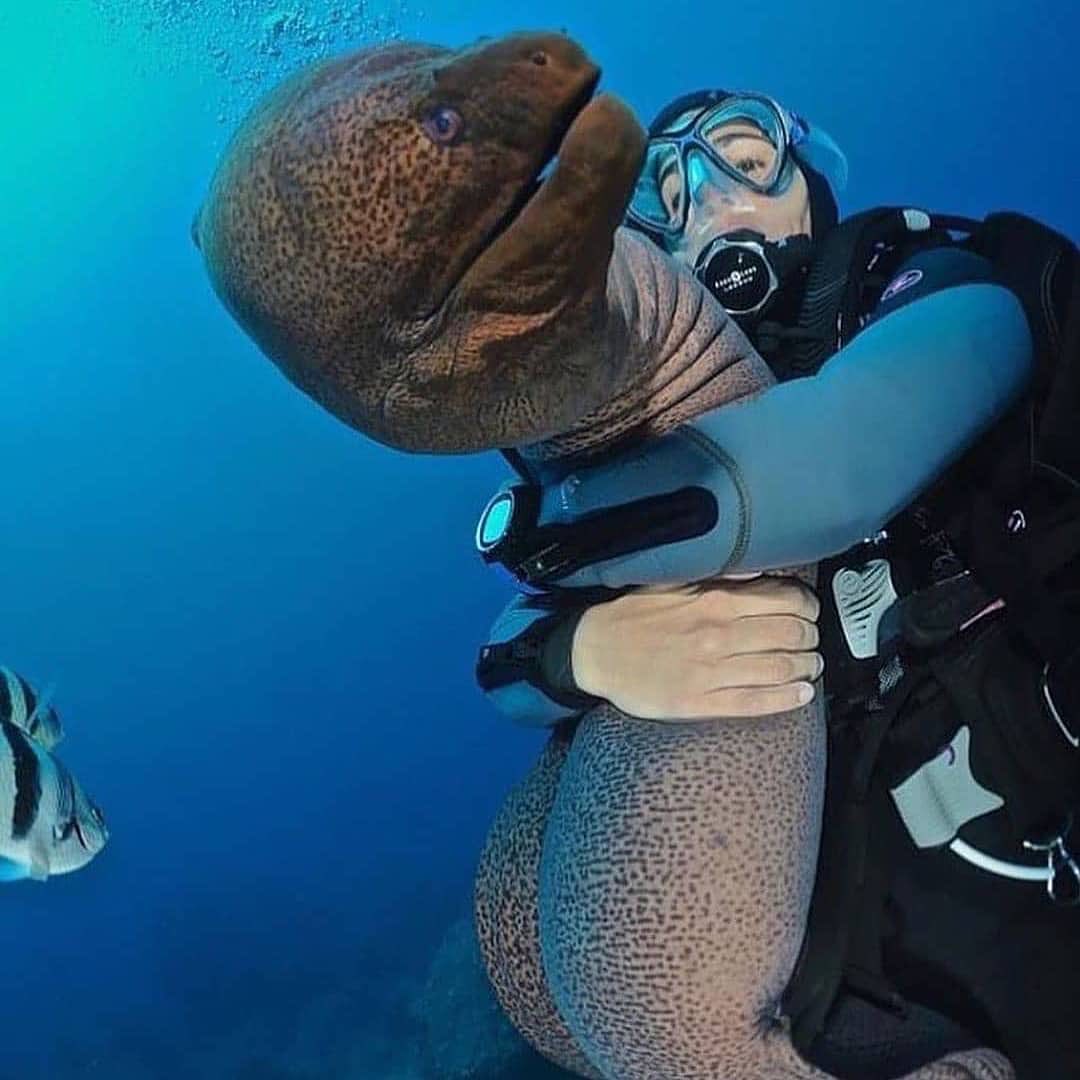
Moray eels, or Muraenidae, are a family of eels whose members are found worldwide. There are approximately 200 species! Here we have the giant moray eel that can grow to ten feet in length and weigh 65 pounds. Not cool! Giant moray eels secrete a protective mucus over their smooth, scaleless skin which in some species contains a toxin. Ew! While these giant snake-fish might look threatening, most of the time they’d prefer to flee and hide than fight with humans.
Coffinfish
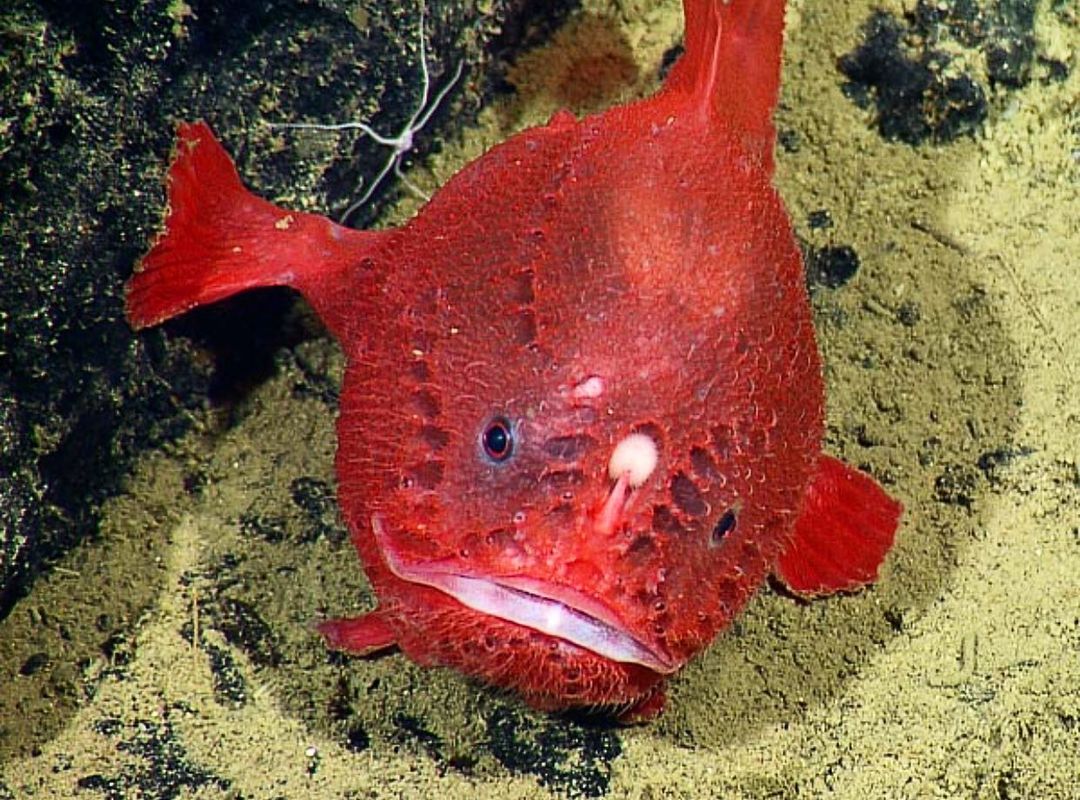
The coffinfish is a species of sea toad of the family Characidae. It is found in salty temperate waters of southwestern Pacific, off the east coast of Australia. So, no going down under any time soon. The skin is densely covered with small to minute spine-like scales. If you thought the pufferfish was the only fish that blew up when threatened, think again. A coffinfish has inflatable gills that it uses to fill its body with water, acting as a defense mechanism.
Do you see that weird thing in between its eyes? That’s a lure used to catch prey with. The coffinfish has a fishing rod on its head. Sigh.
Sheepshead

Look at these uncanny teeth! Look at them! Archosargus probatocephalus, the sheepshead, is a marine fish that grows to 30 inches in length. It’s characterized by six black bars across its body and these chompers in its mouth. The teeth, which closely resemble human teeth, have evolved this way to crush the shells of its prey. These fish love to eat oysters, clams, crabs, and barnacles.
Tassled Scorpionfish

The tasseled scorpionfish, or small-scaled scorpionfish, Scorpaenopsis oxycephala, is a predatory ray-finned fish with venomous spines. It lives in the Indian and Pacific Oceans. It can reach a maximum length of sixteen inches, but you would never know that because its well-camouflaged body is very hard to see. In fact, many swimmers accidentally step on the scorpionfish causing painful injury from the venomous spines. Between this and the stargazer, we’re never putting our feet down again.
Frilled Shark

The frilled shark is one of two extant species of shark in the family Chlamydoselachidae, with a wide but sketchy distribution in the Atlantic and Pacific Oceans. Marvel at the rows and rows and rows and rows of teeth. The teeth number around 300 in all; each tooth is small, with three slender, needle-like cusps alternating with two cusplets. Their long, eel-like bodies can grow to nearly seven feet in length.
Jawfish
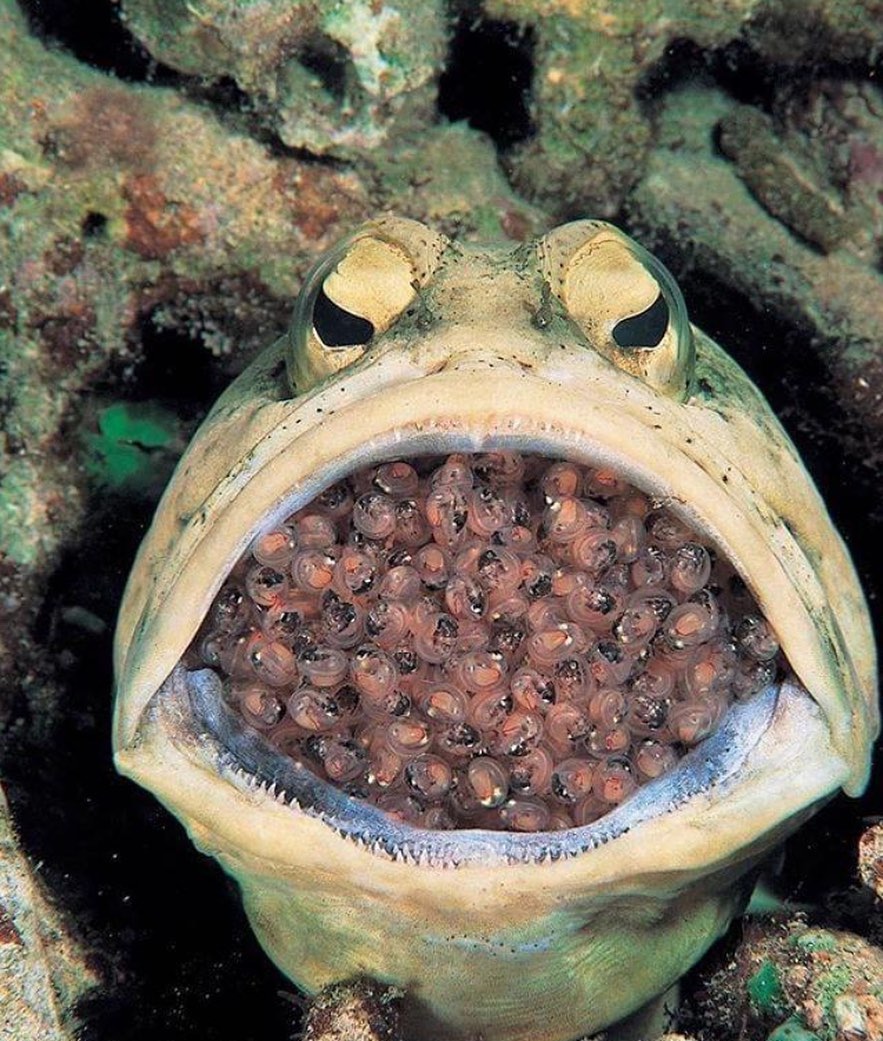
Say “hello” to a male Jawfish (Opistognathidae) with a mouthful of babies. Females lay an egg mass and after fertilizing them, the male takes the eggs into his mouth and incubates them for several days or several weeks depending on the species. During this time he does not eat, and his activities are restricted to juggling the eggs in his mouth to aerate them. Not into it.
Asian Sheepshead Wrasse
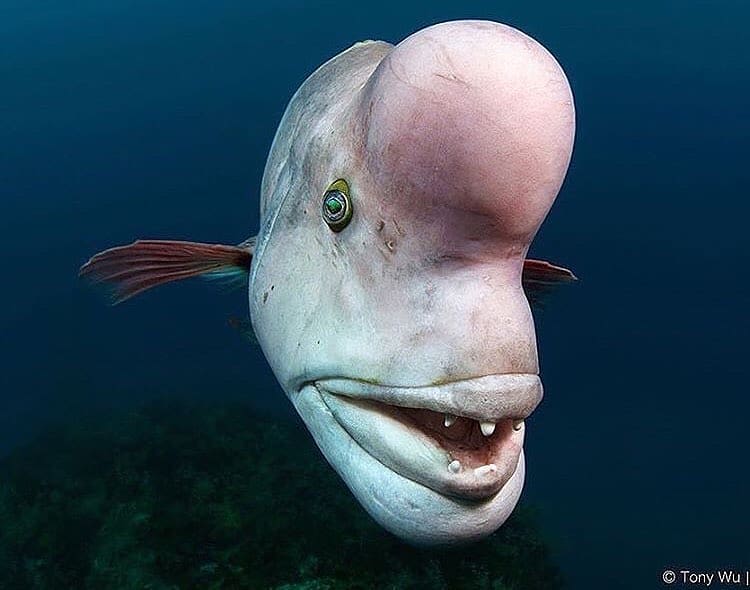
The Asian sheepshead wrasse, Semicossyphus reticulatus, is a species of wrasse, one of the largest, native to the western Pacific Ocean, where it is only known from around the Korean Peninsula, China, Japan, and the Ogasawara Islands, where it inhabits rocky reef areas. This very interesting fish can change its sex. The fish is a beloved food in Japan and other parts of Asia. What do you think it has on its mind?
Lumpfish
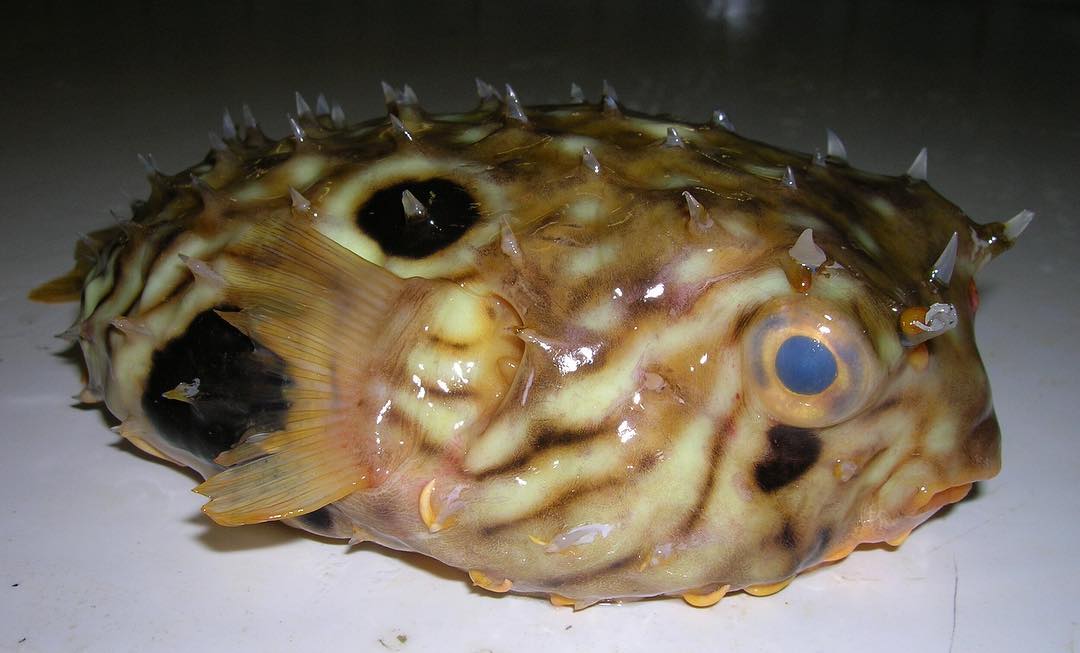
Lumpsuckers or lumpfish are mostly small scorpaeniform marine fish of the family Cyclopteridae. They are found in the cold waters of the Arctic, North Atlantic, and North Pacific oceans. The greatest number of species are found in the North Pacific. As their appearance might suggest, lumpsuckers are poor swimmers. They have modified pelvic fins that it uses to “suck” or stick to surfaces. No thanks to this gooey looking sea monster.
Ghost Shark
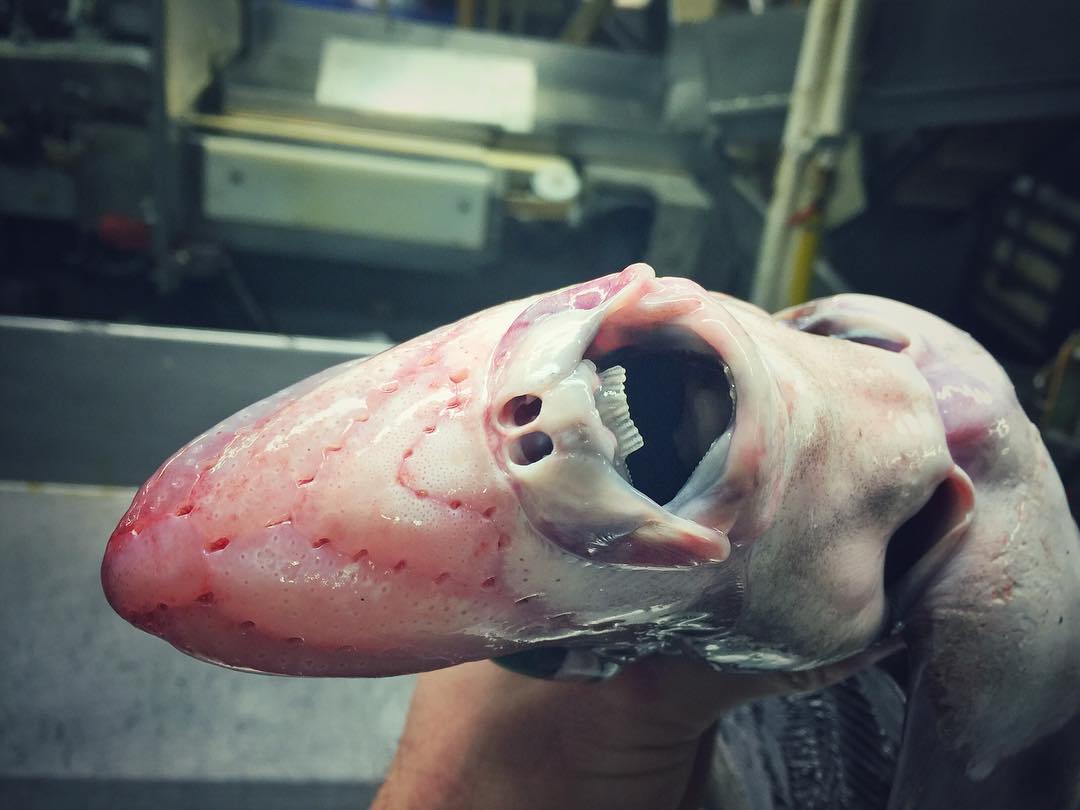
Chimaeras are cartilaginous fish in the order Chimaeriformes, known informally as ghost sharks, ratfish, spookfish, or rabbitfish. Just… NO! This order of fish has been around for over 400 million years. In general, ghost sharks grow five feet in length. This thing looks like it straight up came out of the Alien movie. “In Space, No One Can Hear You Scream” should be updated to include the depths of the ocean as well.
YOU MIGHT ALSO LIKE: 7 of the Strangest Animals on Earth that You Can’t Unsee
Grenadier “Raittail”
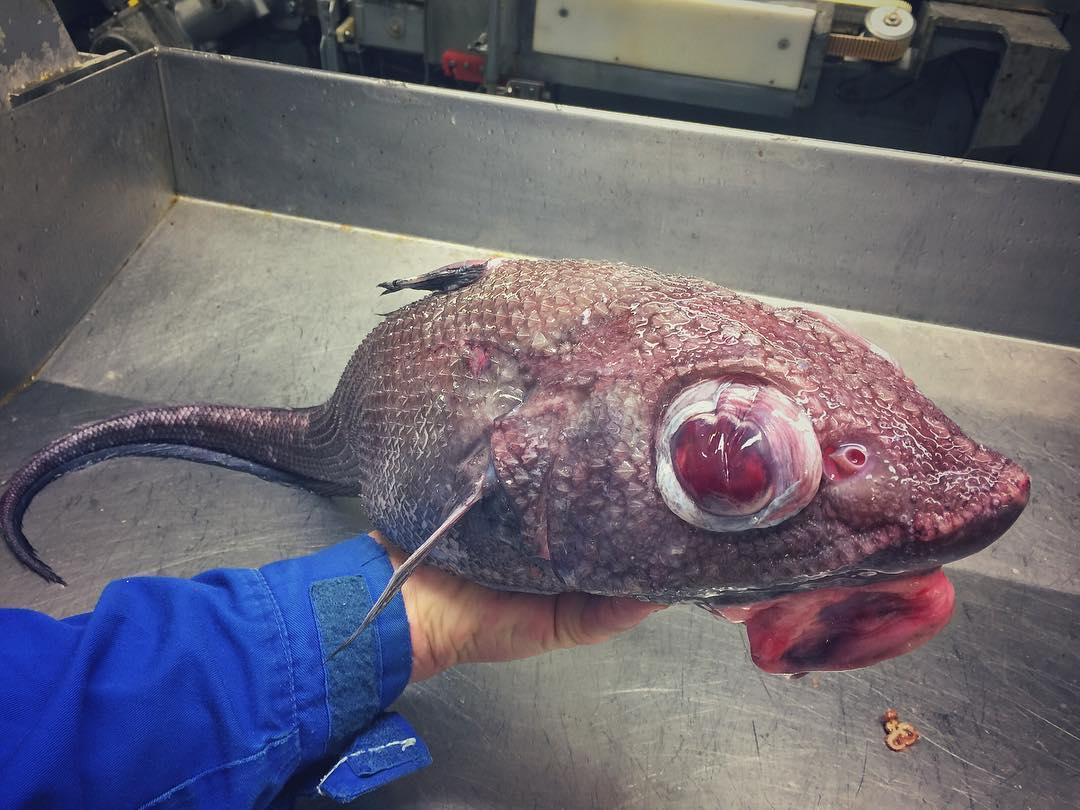
Grenadiers or rattails are generally large, brown to black gadiform marine fish found at great depths from the Arctic to the Antarctic. Members of this subfamily (Macrourina) are amongst the most abundant of the deep-sea fish. These fish range in size from five inches to five feet in length. They populate near hydrothermal vents to feed on very tiny prey. That tail is enough to make us never, ever get in the sea again. Ughhhh!
There you go! We hope you enjoyed your dose of nightmare fuel and the newfound anxiety you feel the next time you’re at the beach. If you liked these freaky animals keep scrolling to discover more weird wildlife from the Arctic and Antarctic.
We’re taking it to the poles, folks! Yes, the polar regions are cold, but some wildlife thrives in the frigid environment. Of course, you’ve probably seen a polar bear or an emperor penguin, but have you taken a look at a bristle worm before? How about a macaroni penguin? There are still so many fascinating creatures to discover and we decided to take a deeper look.
The cold oceans produce some rather bizarre creatures that you’d think wouldn’t be inhabitable. This makes the stuff that lives there rather odd. From birds who feed in the waters to all sorts of things that crawl out, the polar regions offered up a great variety of species for us to share with you. Here are 25 weird creatures you’ll find in the polar regions that you probably didn’t know about. We hope you enjoy! Heads up, the first one is a bit creepy.
Bristle Worm
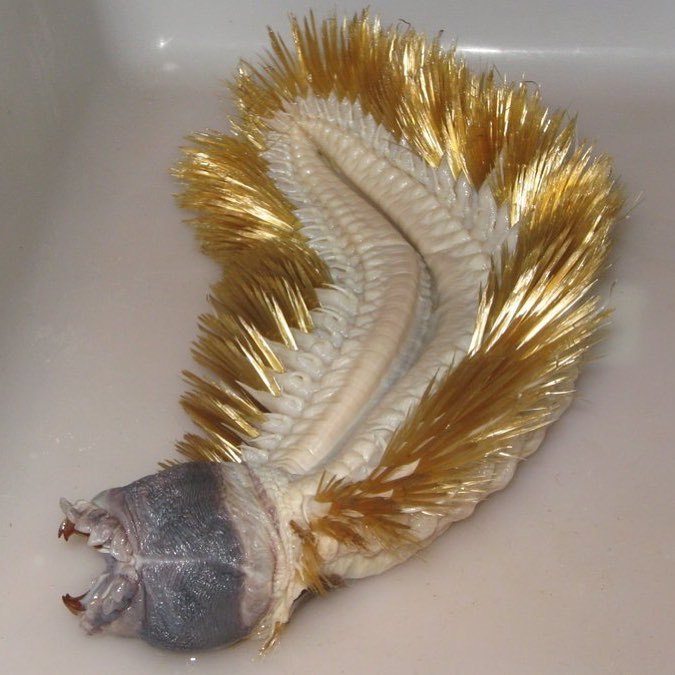
Say “hello” to your new nightmare. This bristle worm looks like a scrubber from hell. The bristle-like appendages help this scale worm crawl across the ocean floor. This terrifying creature is only known to live in the waters near Antarctica, but scientists discovered it can live in warmer water temperatures as well.
Blue Eyed Shag
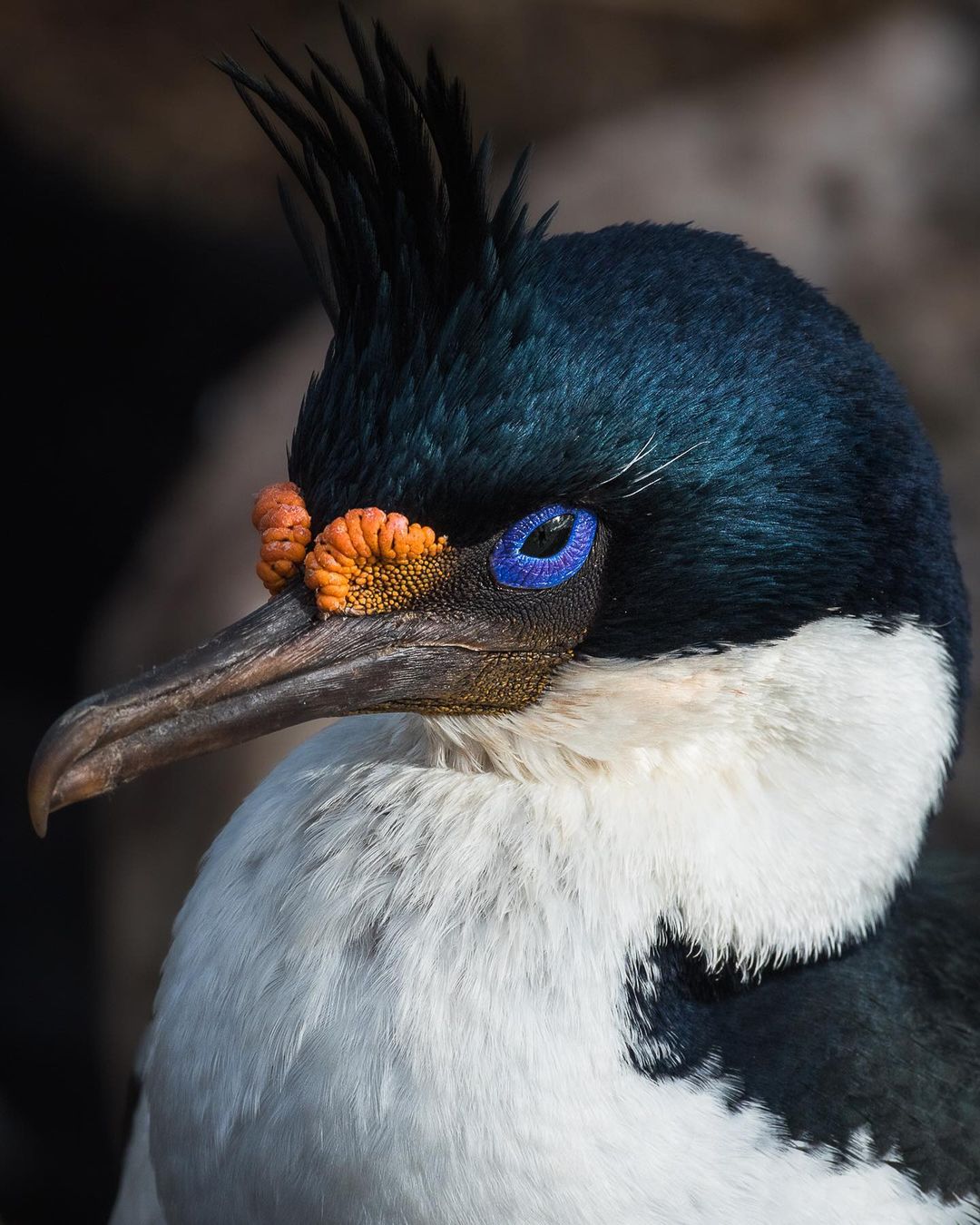
Check out these baby blues! The bird is the only cormorant species that inhabits the Antarctic. Between the blue eye rings, orange caruncles, and feather crest, the blue-eyed shag is one stately-looking bird. Stay warm, little cutie!
Crocodile Icefish
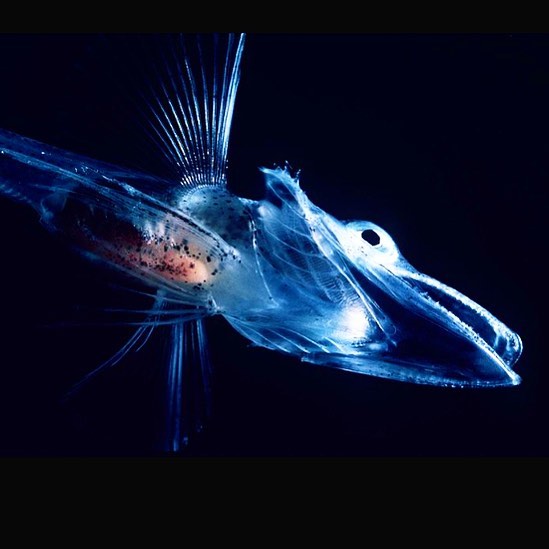
The crocodile icefish lives deep in the Antarctic Ocean. Temperatures there are just above freezing so it needs some clever adaptations to be able to survive in the chilly waters. It doesn’t need hemoglobin as Antarctic waters have so much oxygen that they aren’t even needed, so its blood is clear.
Arctic Fox
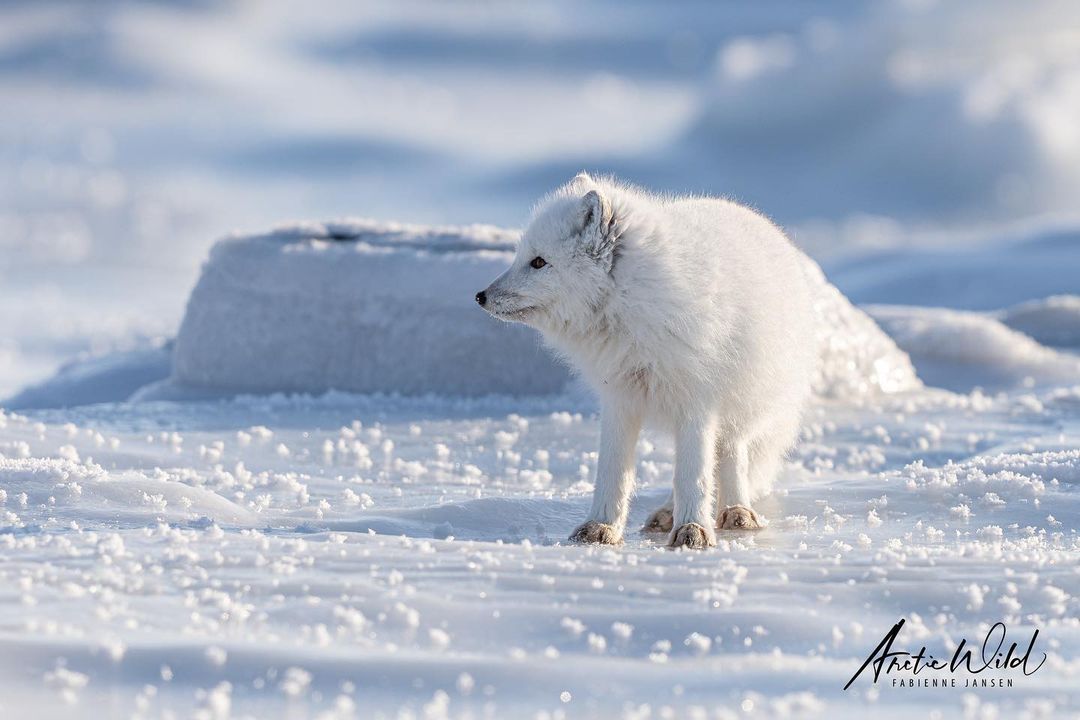
Check out this little snow angel. The Arctic fox, also known as the white fox, polar fox, or snow fox, is a small fox native to the Arctic regions of the Northern Hemisphere and common throughout the Arctic tundra. It has adapted to living in cold environments and is famous for its thick, warm fur that is also used as camouflage.
Snailfish
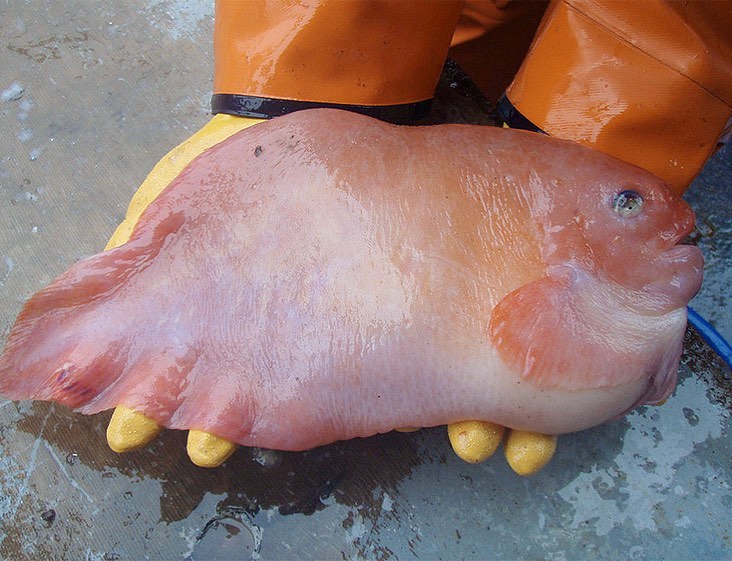
Move over blobfish, it’s time for the snailfish’s time in the spotlight. Snailfish are named for their loose, jelly skin that takes the place of scales. At the bottom of their tadpole-shaped bodies are large suckers, which are used to attach themselves to rocks or other objects on the ocean floor. 20 species make their home in Arctic waters.
Southern Rockhopper
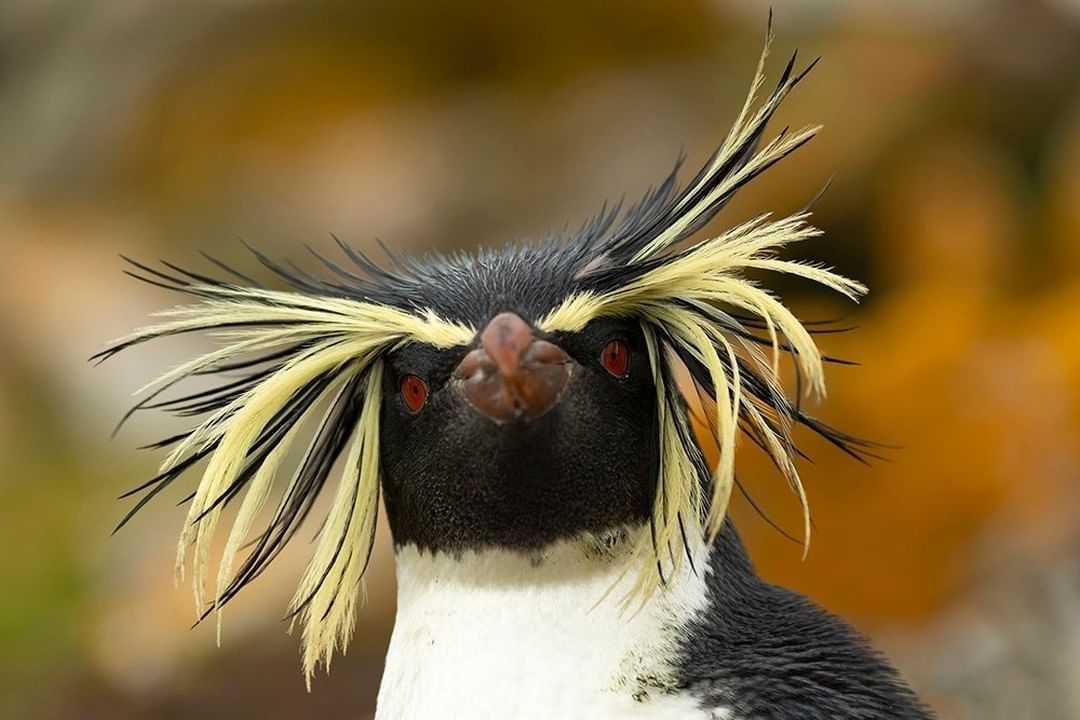
Woke up like this! Rockhopper penguins are considered one of the most aggressive penguin species. They are incredibly irritable and will attack anything that bothers them. If this bird looks grumpy to you, it’s because it is. Is this the world’s most relatable bird?
Colossal Squid

Although the Colossal Squid shares many features to that of other squids, they are special in that they have sharp hooks on its arms and tentacles. They are a major prey animal for Sperm Whales and they might be the reason that many Sperm Whales possess an array of scars across their backs. Colossal Squids also have the largest eyes in the animal kingdom. They can weigh 1500 pounds and stretch 33 feet in length. Nope!
Ice Worm
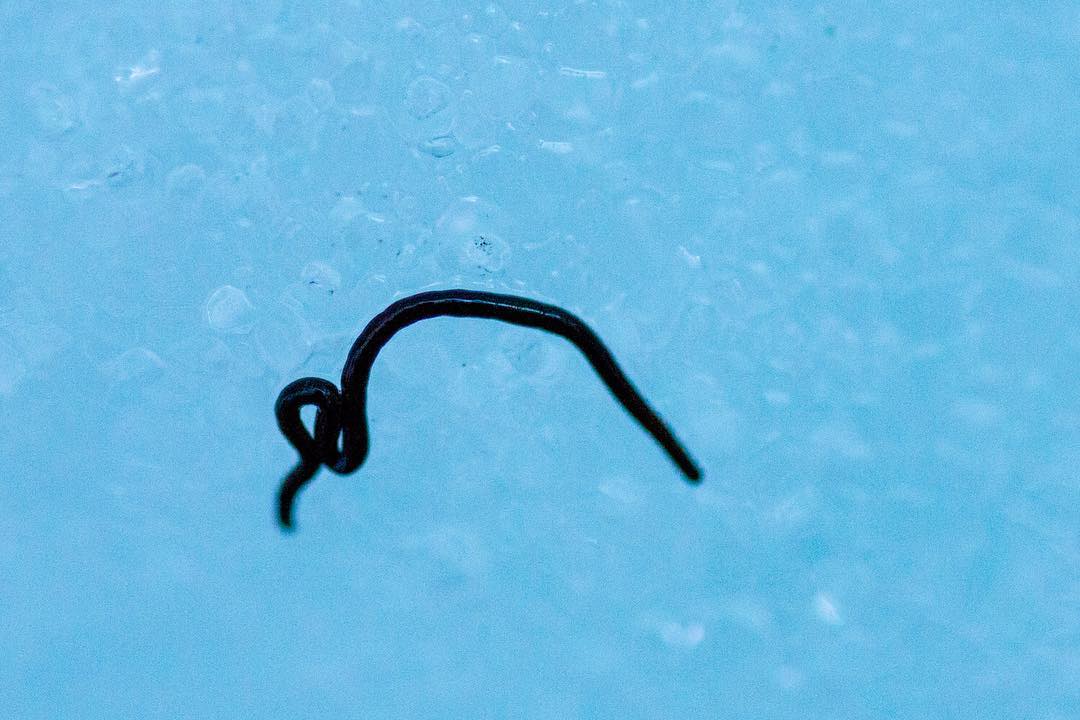
Did you know worms can survive in ice? They are related to leeches and earthworms, and these disturbing crawlers are well adapted to life in the cold. They are able to regulate their body temperature so their insides don’t freeze. They burrow deep into the surfaces of glaciers and tend to hide there during the day since they run the risk of dying in warmer temperatures. Microscopic bristles help them travel across ice without slipping.
Grolar Bear
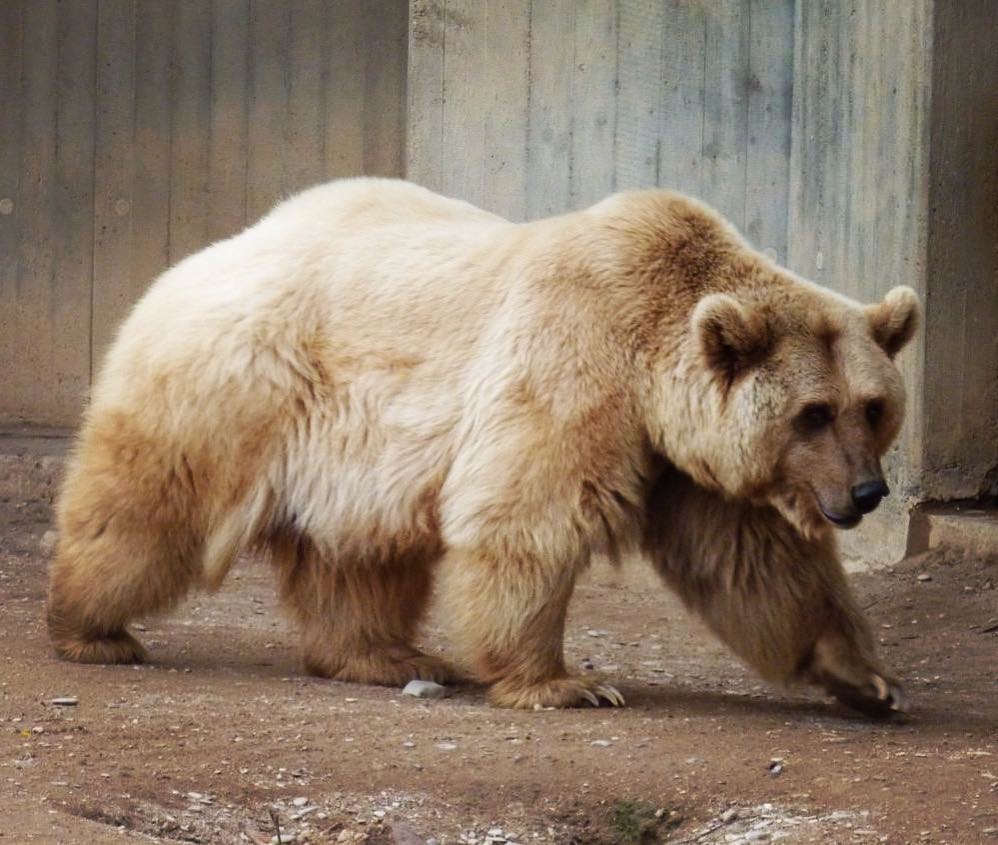
Sure, you know about the polar bear but did you know they breed with grizzly bears and produce grolar bears? With climate change, grizzly bears are moving further north, so there is more overlap between grizzly bears and polar bears in terms of their habitat. Pretty wild!
Tardigrade
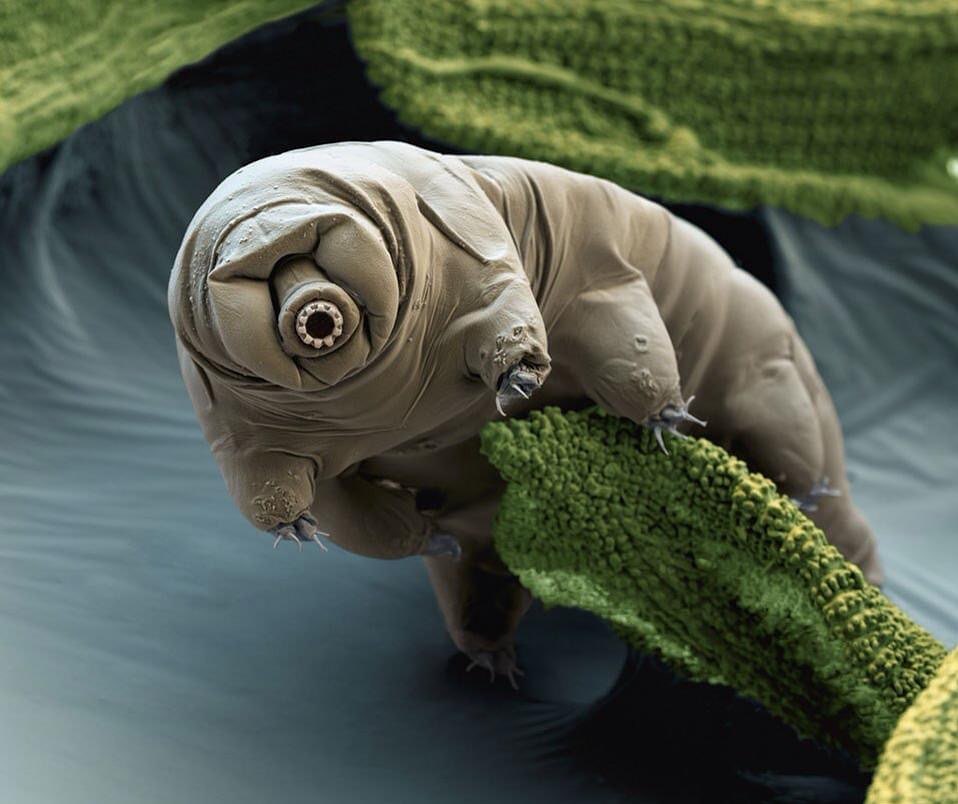
Tardigrades are one of the most unique organisms found in Antarctica. They are also known as “water bears” for their plump bodies and clawed limbs and are considered to be one of the smallest creatures found on Earth. But anything that can survive in Antarctica shouldn’t be judged by its size! In addition to being one of the smallest animals on the planet, they are also one of the oldest.
Sea Spider
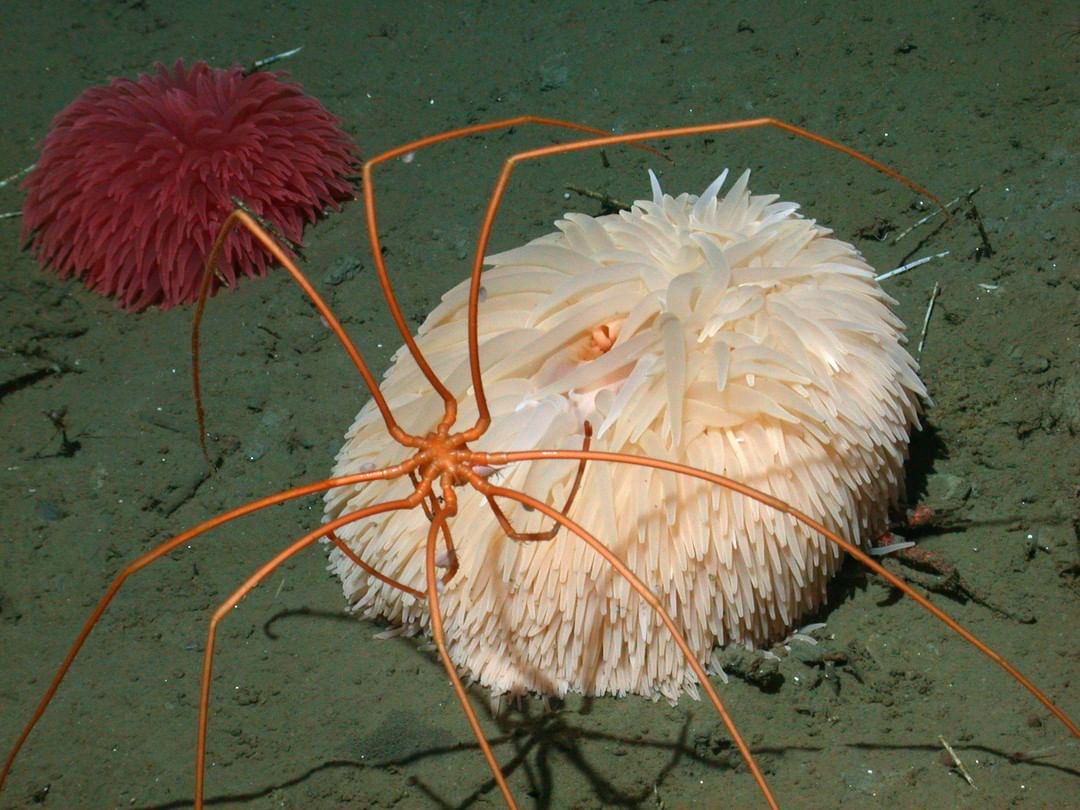
Will we ever escape spiders? Is no place safe from their terror? Sea spiders aren’t actually spiders and can only be found at the bottom of the ocean. These arthropods can grow to crazy sizes in locations around the Earth’s poles (yay…) some have a leg span of up to 10 inches. And, unlike actual spiders, these creatures can have more than 8 legs and up to 12.
Lion’s Mane Jellyfish

The lion’s mane jellyfish is the largest species; specimens as large as 8 feet wide and 120 feet long have been found. It’s also possible for them to have up to 1,200 tentacles, making their size seem that much greater. These giant jellies like to hang out near the surface of the ocean in the Arctic and have been known to travel in groups.
Walrus

Walruses are definitely unusual looking Arctic creatures, but they have some strange habits and abilities that make them even absurder than they look. Their trademark tusks are actually teeth, which can grow up to three feet long and can be found on both males and females. Since their bodies are so enormous, walruses use their tusks to dig into the ice as leverage to haul themselves out of the water.
Greenland Shark
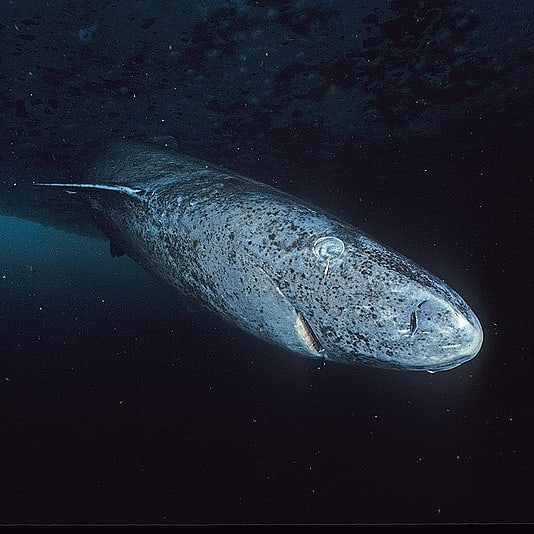
Bowhead whales were considered Earth’s longest-living vertebrate animal, with some living over 200 years old. Then, a Greenland shark suddenly became the new record holder as scientists estimated one shark’s age at around 400 years. They’re also some of the world’s biggest carnivores and among the most successful predators in Arctic waters.
Southern Giant Petrel

The southern giant petrel, also known as the Antarctic giant petrel, giant fulmar, stinker (really?), and stinkpot (what!?), is one of the largest seabirds of the southern oceans. This odd-looking feathered friend can weigh nearly 10 pounds and they can have a wingspan of 6-7 feet.
Hairy Chested Hoff Crab
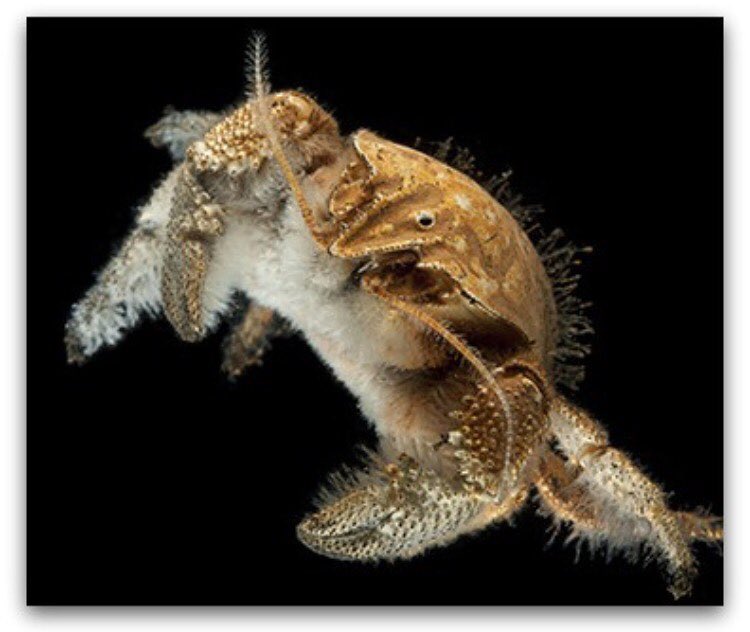
If you were wondering if any creatures were named for David Hasselhoff, this crab is so named because of his furry chest. Yes, this is a real thing. This novel-looking creature was found at a depth of 2,000 meters in Antarctic waters, a spot that is remarkably cold. To keep warm, the crabs will find vents to gather near to, ever-careful not to boil themselves. Mmmm!
Springtail
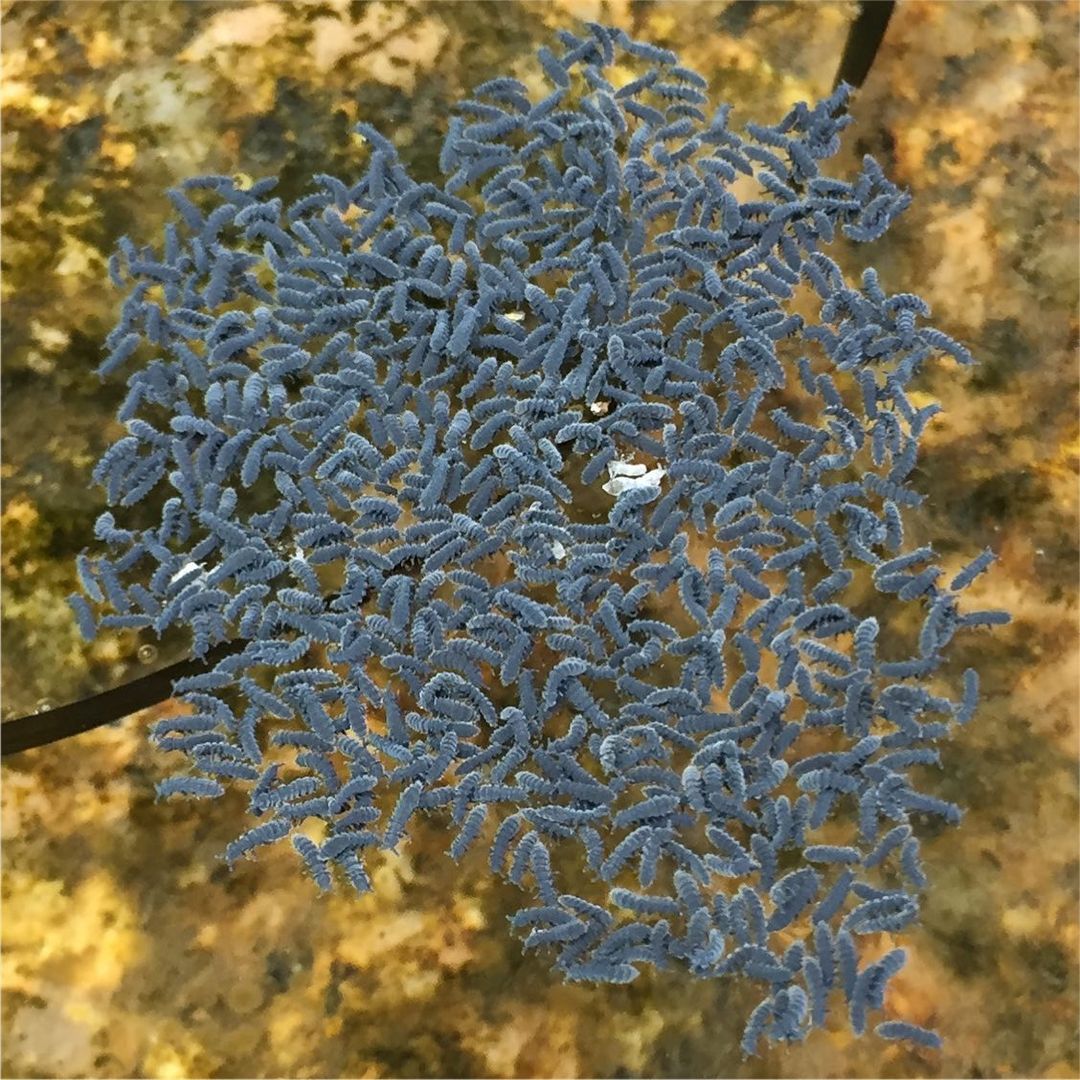
Since seals and penguins are only visitors to (they’re not full-time residents) Antarctica, the continent’s largest creature is an arthropod that lives there all year round. They are insect-like organisms proving there really is nowhere safe from creepy. A coating of fine hairs allows them to be hydrophobic so they can forage without the risk of drowning.
Antarctic Krill
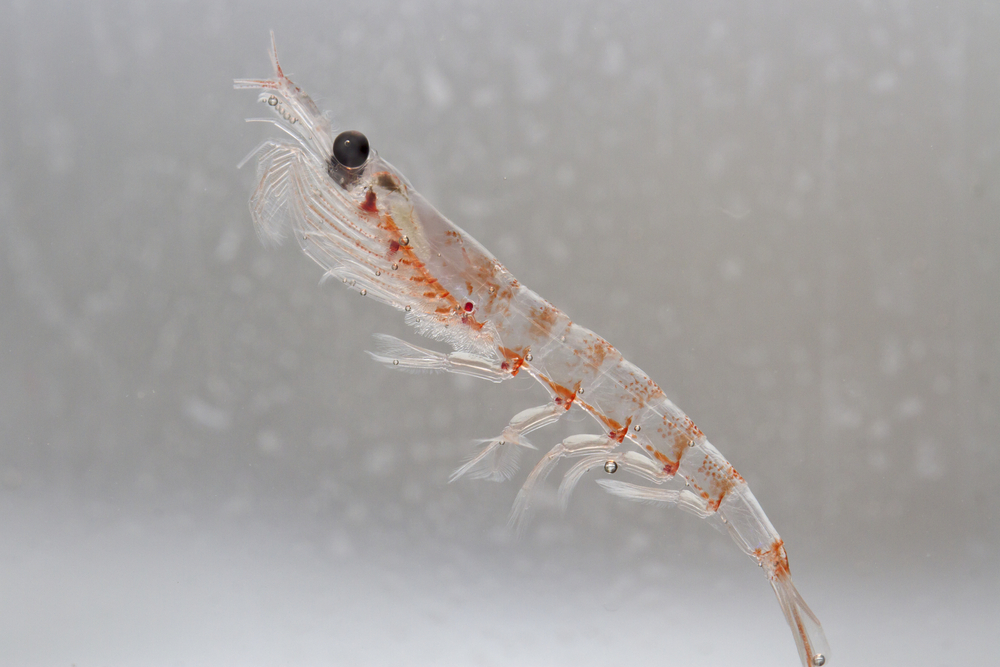
The Antarctic krill is an extremely common, pelagic crustacean native to the waters surrounding Antarctica and is one of the most important prey species near the bottom of Southern Ocean food webs. It is one of the building blocks of sealife nourishing many other creatures. Without this species, Southern Ocean food webs would completely collapse.
Macaroni Penguin
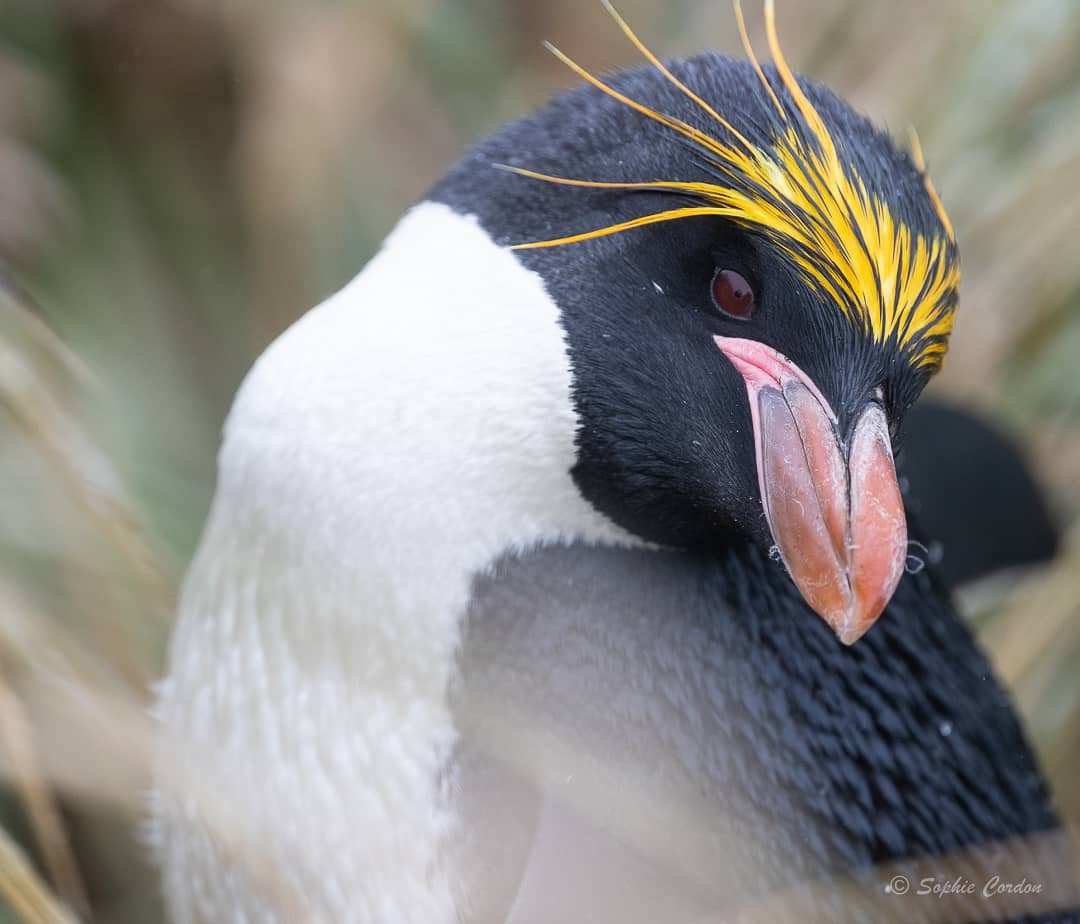
Maccaronism was a term for a particular flamboyant style in 18th-century England marked by excessive ornamentation. A person who adopted this fashion was labeled a “maccaroni” or “macaroni”, as in the song “Yankee Doodle.” Sailors began using it to describe these penguins and their exciting crest. These penguins are closely related to emperor penguins.
Glass Sponge
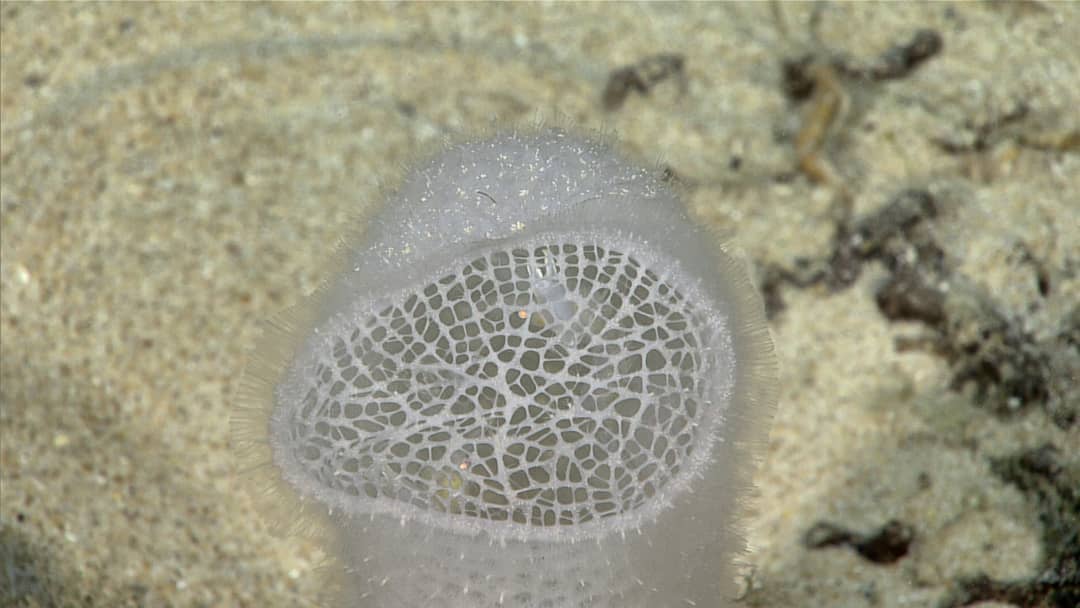
Glass sponges are so-called because their skeletons are made out of silica and come in a range of unusual shapes. These creatures don’t survive anywhere but in the waters of Antarctica. They act as living skyscrapers allowing all sorts of other organisms to live on them. Scientists must take great care because their needle-like parts can get stuck in the skin. They’re like magical ice monsters!
Isopod
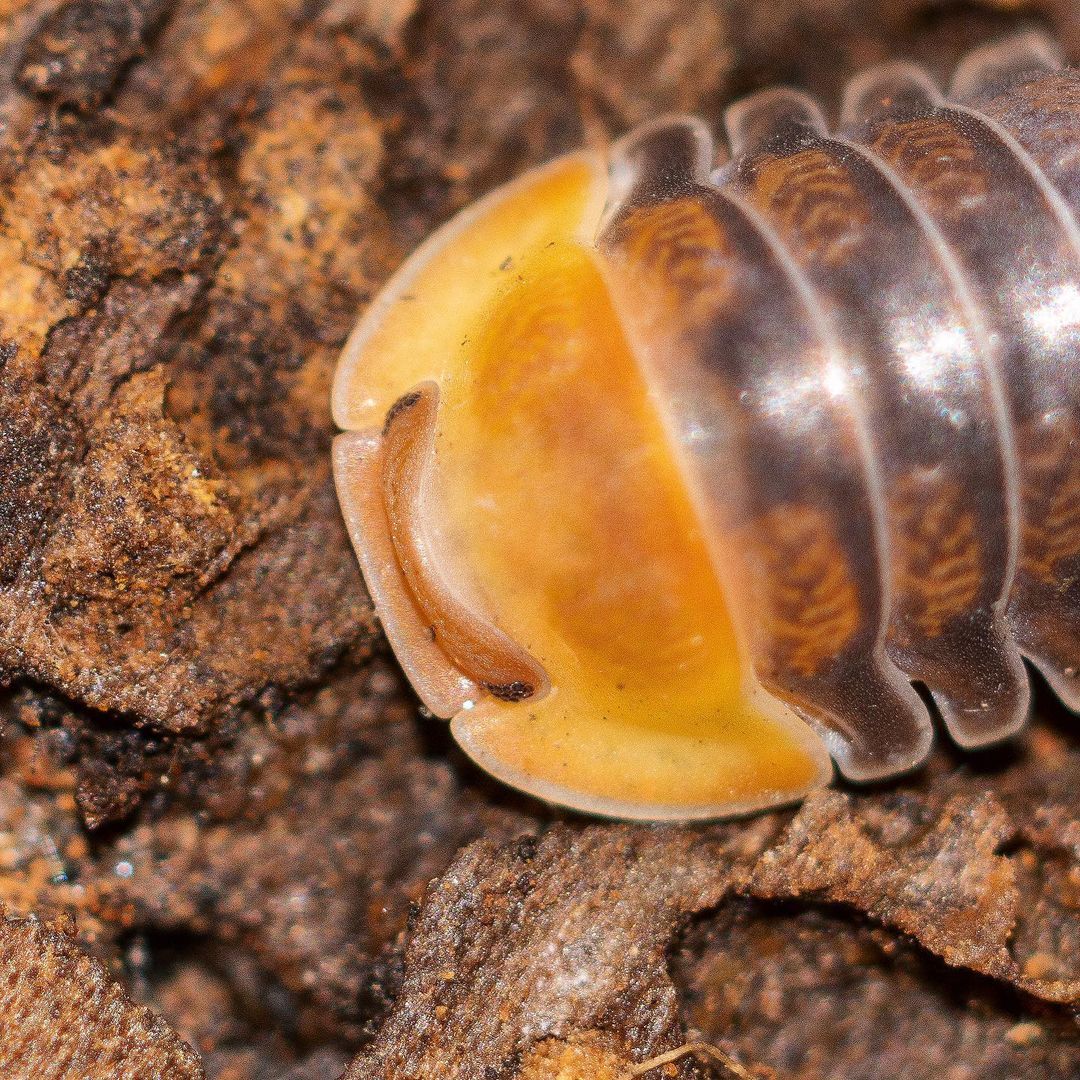
Yes, you’ll find isopods in Antarctica. There you’ll predominately find aquatic species that generally measure about 4 inches long, but some have been discovered of twice that size. Although it looks like a bug, these creatures are more closely related to crabs. No, thank you!
YOU MIGHT ALSO BE INTERESTED IN: 10 Bonkers Australian Animals That Will Make You Say ‘Nope’
Chinstrap Penguin
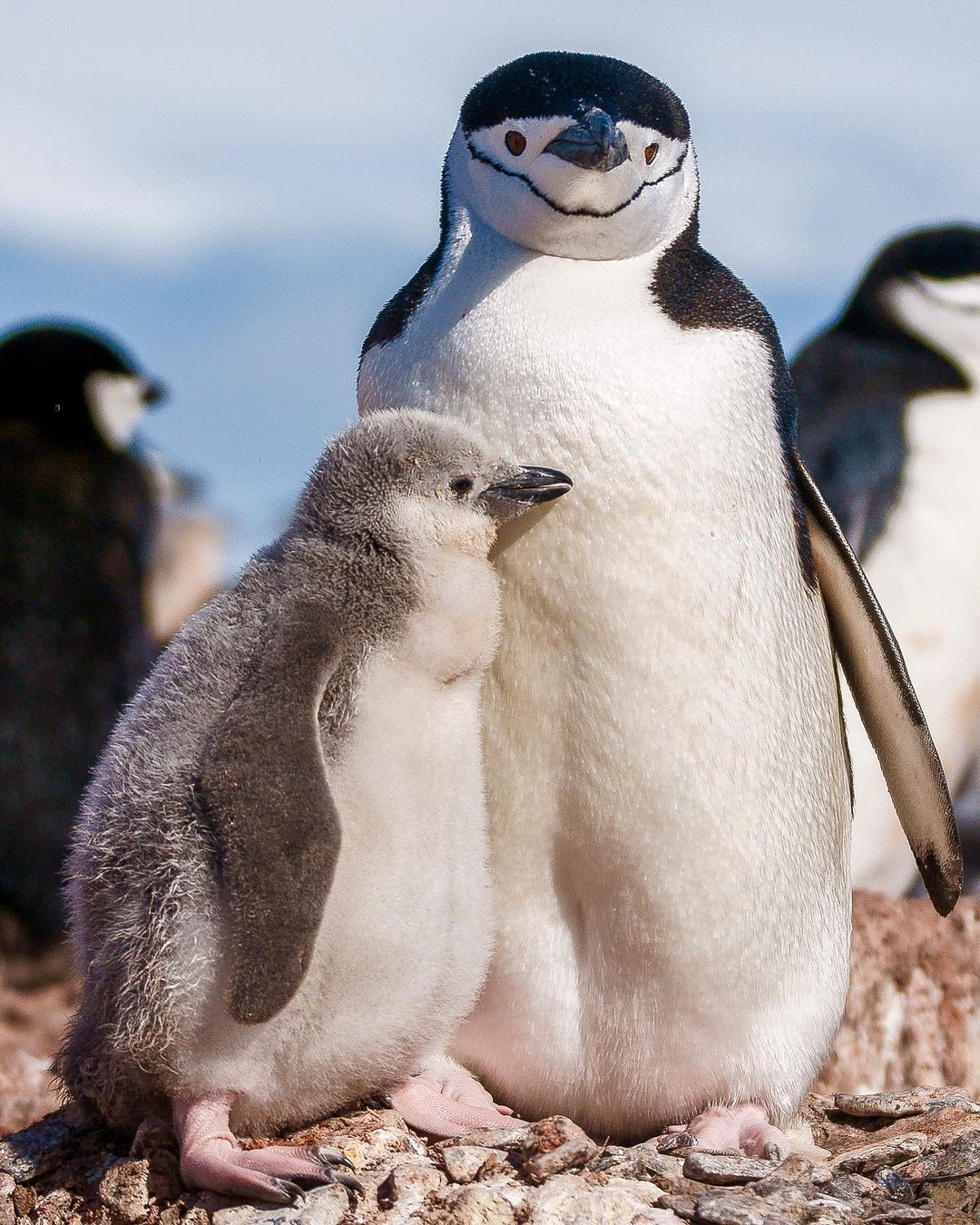
Well, have you ever seen a penguin with a chinstrap before? It looks like it’s wearing a little helmet! The chinstrap penguin is a species of penguin that inhabits a variety of islands and shores in the Southern Pacific and the Antarctic Oceans. They are expert fishers and probably the cutest thing on this list.
Leopard Seal
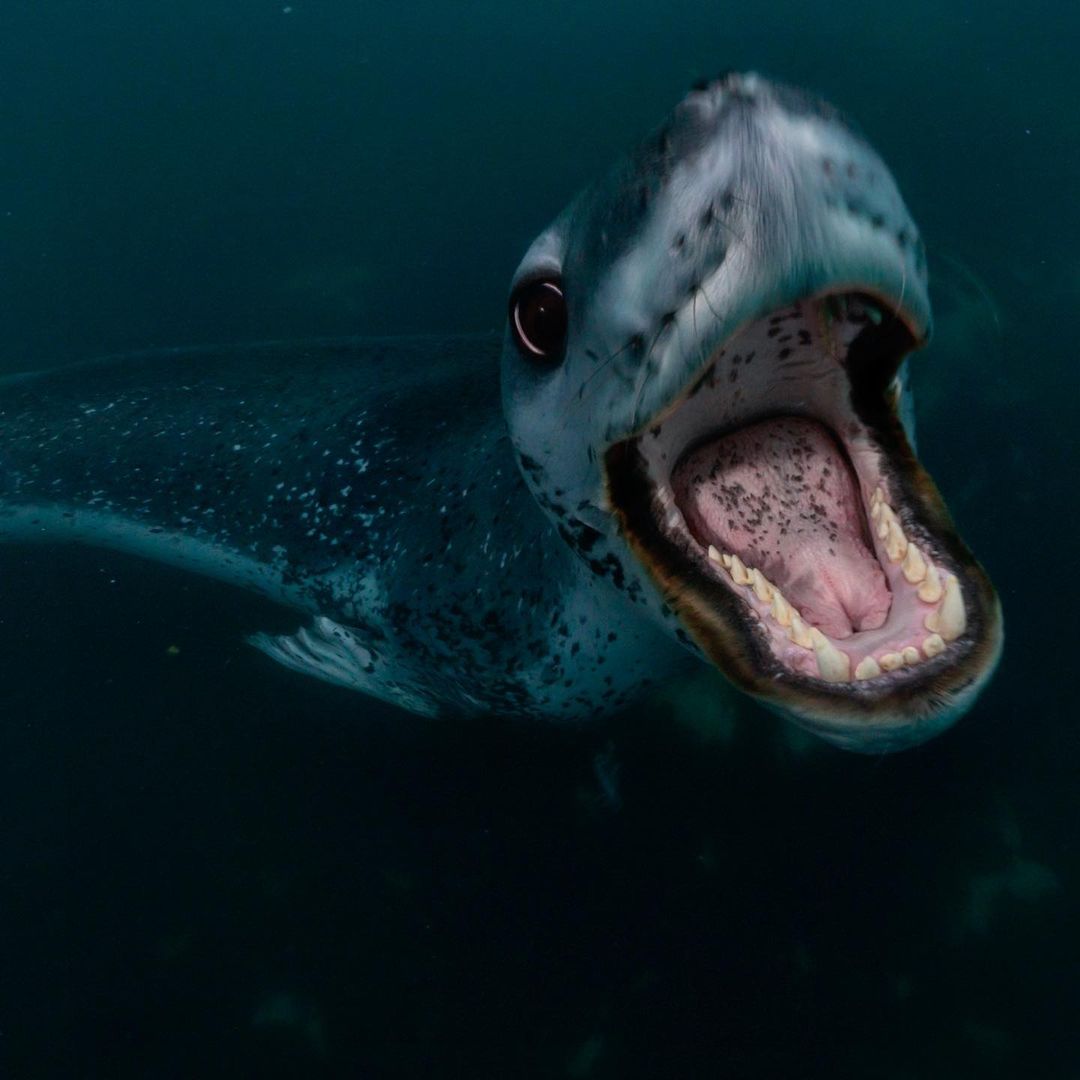
The leopard seal also referred to as the sea leopard, is the second largest species of seal in the Antarctic. Its only natural predator is the killer whale. It feeds on a wide range of prey including cephalopods, other pinnipeds, krill, birds, and fish. They’ve been known to kill humans. The most recent example was a marine biologist who was drowned by one. An average adult weighs nearly 800 pounds.
Bowhead Whale
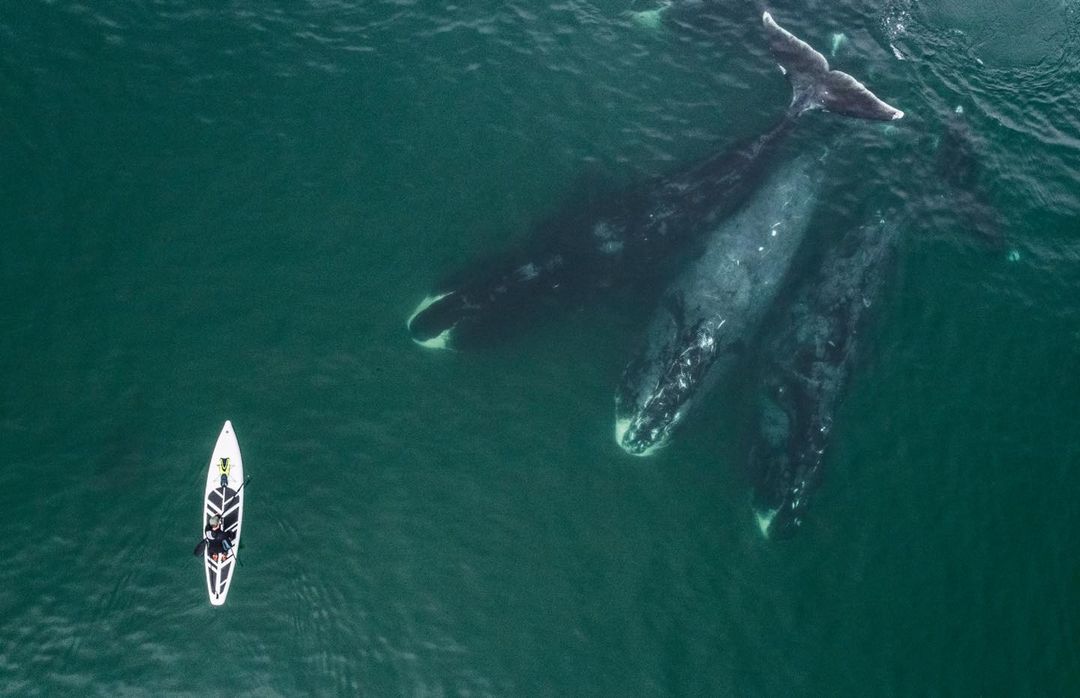
We mentioned the bowhead whale earlier because they can live for so long. We’re talking centuries! It is the only baleen whale endemic to the Arctic and subarctic waters. These whales measure 65 feet in length and weigh 200,000 lbs on average. These are some huge ones!
YOU MIGHT ALSO LIKE: 10 Terrifying and Bizarre Creatures That Will Haunt Your Nightmares
Muskox
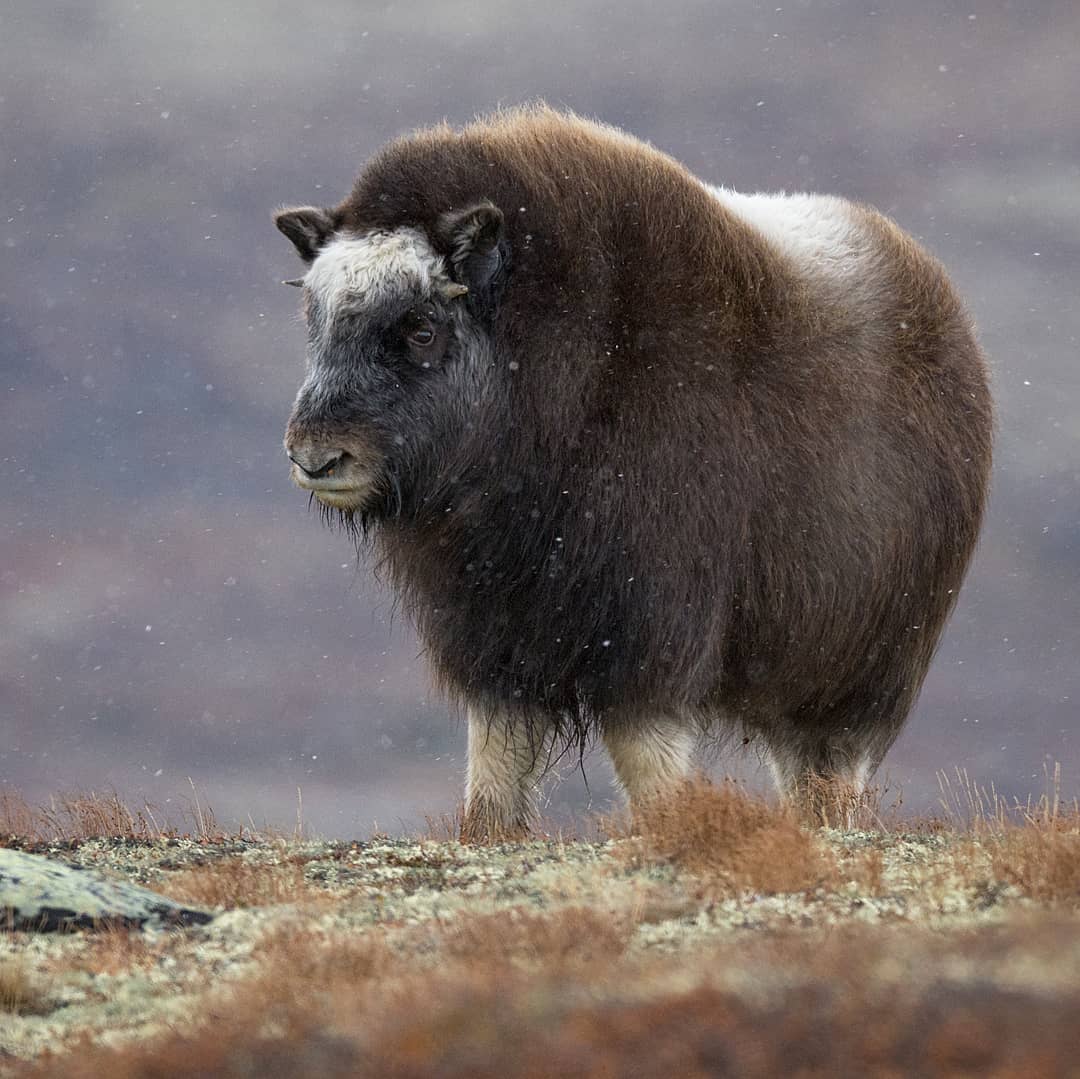
Ah, we’ll leave you with a cute one, the muskox. This is a young one and we’re rather fond of it. The muskox is an Arctic hoofed mammal of the family Bovidae, noted for its thick coat and for the strong odor emitted by males during the seasonal rut, from which its name derives. So, it might look cute, but it smells awful!
There you go! 25 crazy creatures you can find in Antarctica and the Arctic. The polar regions offer such a diverse array of wildlife and we hope this list showed just how varied it is.
Mamas Uncut is THE online place for moms. We cover the latest about motherhood, parenting, and entertainment as well – all with a mom-focused twist. So if you're looking for parenting advice from real parents, we have plenty of it, all for moms from moms, and also experts. Because, at the end of the day, our mission is focused solely on empowering moms and moms-to-be with the knowledge and answers they’re looking for in one safe space.
